2025-2026

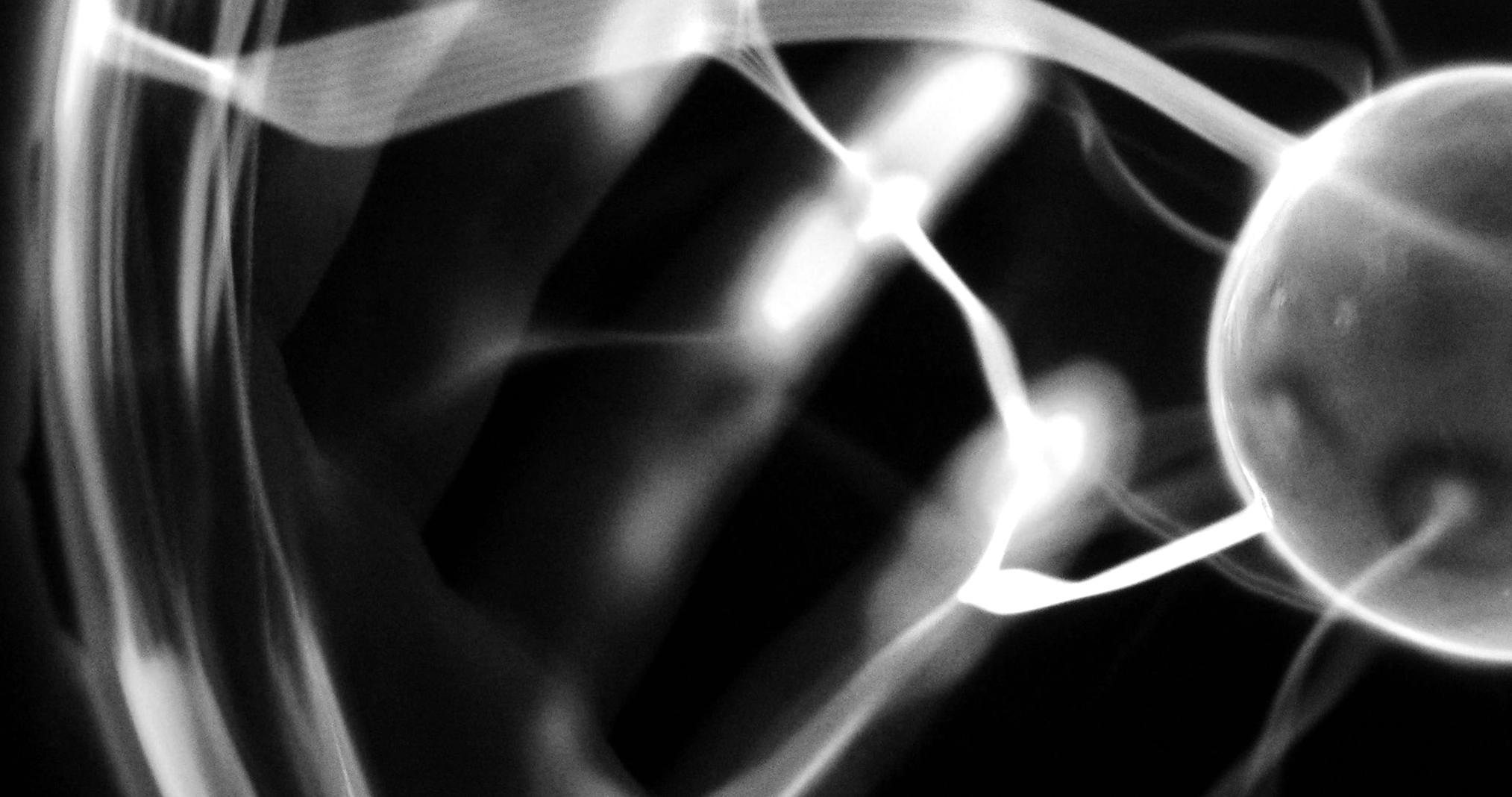
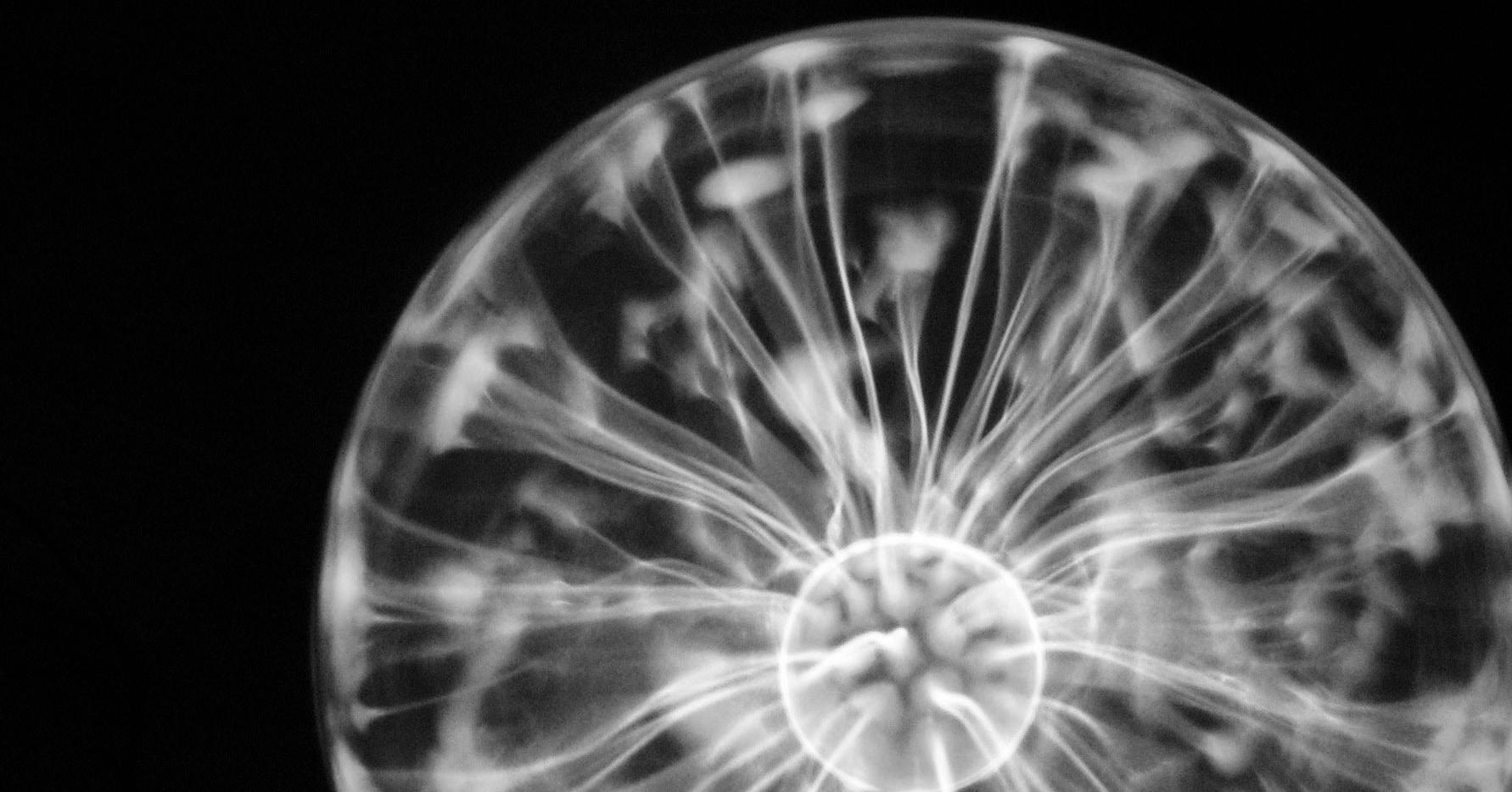
Hands-on experiments and background information that allow students to explore the different forms of energy and how they are transformed. Students master forms of energy and their transformations, and then teach others what they have learned and how it can be visualized in the world around them. Science Grade







NEED Mission Statement
The mission of The NEED Project is to promote an energy conscious and educated society by creating e ective networks of students, educators, business, government and community leaders to design and deliver objective, multi-sided energy education programs.
Permission to Copy
NEED curriculum is available for reproduction by classroom teachers only. NEED curriculum may only be reproduced for use outside the classroom setting when express written permission is obtained in advance from The NEED Project. Permission for use can be obtained by contacting info@need.org.
Energy Data Used in NEED Materials
NEED believes in providing teachers and students with the most recently reported, available, and accurate energy data. Most statistics and data contained within this guide are derived from the U.S. Energy Information Administration. Data is compiled and updated annually where available. Where annual updates are not available, the most current, complete data year available at the time of updates is accessed and printed in NEED materials. To further research energy data, visit the EIA website at www.eia.gov.
Teacher Advisory Board
Teacher Advisor y Board
Constance Beatty Kankakee, IL
La’Shree Branch Highland, IN
Jim M. Brown Saratoga Springs, NY
Mark Case Randleman, NC
Lisa Cephas Philadelphia, PA
Nina Corley Galveston, TX
Samantha Danielli Vienna, VA
Robert Lazar Albuquerque, NM
Melissa McDonald Gaithersburg, MD
Paula Miller Philadelphia, PA
Hallie Mills St. Peters, MO
1.800.875.5029 www.NEED.org © 2025
Jennifer MitchellWinterbottom Pottstown, PA
Monette Mottenon Montgomery, AL
Mollie Mukhamedov Port St. Lucie, FL
In support of NEED, the national Teacher Advisory Board (TAB) is dedicated to developing, improving, and promoting standards-based, e ective energy curriculum, training, and outreach. NEED thanks these individuals for their support and collaboration.
Adebisi Babayemi, M.Ed, NBCT Bowie, MD
La’Shree Branch Highland, IN
James M. Brown, NBCT, CEM, BOC Saratoga Springs, NY
Karely Carlos, M.S. Lodi, CA
Mark Case, M.S. Randleman, NC
Lisa Cephas, M.Ed Philadelphia, PA
Nina Corley Galveston, TX
Samantha Danielli, M.Ed Vienna, VA
NEED TAB Emeriti
Jennifer Davis, M.Ed Cincinnati, OH
Michelle Garlick, M.Ed Cary, IL
Nancy Gi ord, M.S. Harwich, MA
Erin Gockel, M.Ed Farmington, NM
Greg Holman Paradise, CA
Melissa King, MLIS Gaithersburg, MD
Paula Miller, M.Ed Philadelphia, PA
Hallie Mills, EdD Sammamish, WA
Shannon Donovan Greene, RI
Cori Nelson Win eld, IL
Michelle Garlick Long Grove, IL
Jennifer Mitchell-Winterbottom, M.Ed, WT Pottstown, PA
Mollie Mukhamedov Port St. Lucie, FL
Cori Nelson Hinckley, IL
Michelle Gay Daphne, AL
Judy Reeves Lake Charles, LA
Nancy Gi ord Harwich, MA
Matthew Reis, PhD Chía, Colombia
Erin Gockel Farmington, NM
Craig Richard, M.Ed Atkinson, NH
Libby Robertson Chicago, IL
Robert Griegoliet Naperville, IL
Greg Schanne Philadelphia, PA
Eric Havel Oakland, CA
DaNel Hogan Tucson, AZ
Amy Schott, M.Ed, NBCT Raleigh, NC
Don Pruett Jr. Puyallup, WA
Kristin Slota, M.Ed Yardley, PA
Brandon Staton Thomasville, NC
Judy Reeves Lake Charles, LA
Jennifer Trochez Maclean, M.Ed, NBCT Los Angeles, CA
Libby Robertson Chicago, IL
Scott Valenta Win eld, IL
Amy Schott Raleigh, NC
Tom Spencer Chesapeake, VA
Jennifer Trochez MacLean Los Angeles, CA
NEED Teachers eventually must retire from the classroom, but many remain engaged in their communities and with NEED curriculum, training, and outreach activities. NEED thanks these individuals for their continued support and collaboration.
Constance Beatty Kankakee, IL
Melinda Forist Well eet, MA
Barbara Lazar, M.Ed Albuquerque, NM
Greg Holman Paradise, CA
Robert Lazar Alburquerque, NM
Barbara Lazar Albuquerque, NM
Wayne Yonkelowitz Fayetteville, WV
Don Pruett, Jr., M.Ed Puyallup, WA
Wayne Yonkelowitz, M.Ed, NBCT, Milken Educator Fayetteville, WV
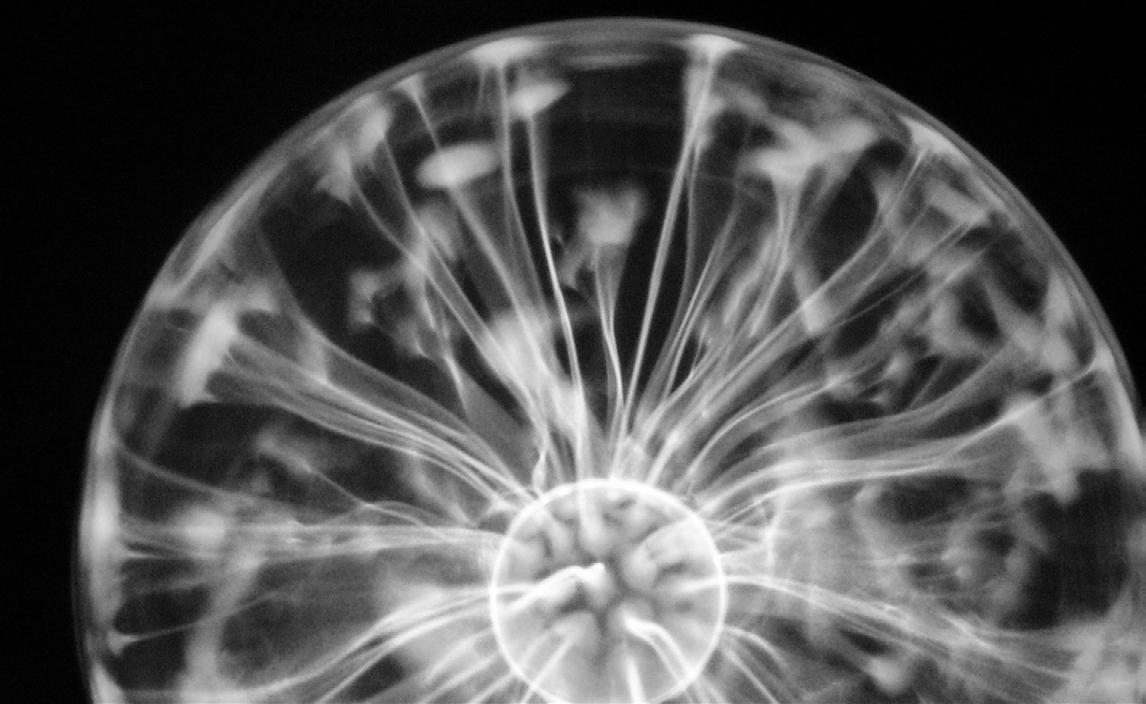
Intermediate Science of Energy
Cover image courtesy of Laurence Diver, contributor to Stock.XCHNG stock photo website.
Table of Contents
1 DC microammeter
3 Motors (one disassembled)
1 Hand generated flashlight
6 Plastic bags
1 Radiometer
30 Rubber bands
1 Set of happy/sad spheres
1 Solar panel kit
1 Superball
3 Thermometers (metal)
4 Student thermometers (plastic)
1 Tin wire
2 Tongs
1 Yo-yo
Standards Correlation Information
www.need.org/educators/curriculum-correlations
Next Generation Science Standards
This guide effectively supports many Next Generation Science Standards. This material can satisfy performance expectations, science and engineering practices, disciplinary core ideas, and cross cutting concepts within your required curriculum. For more details on these correlations, please visit NEED’s curriculum correlations website.
Common Core State Standards
This guide has been correlated to the Common Core State Standards in both language arts and mathematics. These correlations are broken down by grade level and guide title, and can be downloaded as a spreadsheet from the NEED curriculum correlations website.
Individual State Science Standards
This guide has been correlated to each state’s individual science standards. These correlations are broken down by grade level and guide title, and can be downloaded as a spreadsheet from the NEED website.
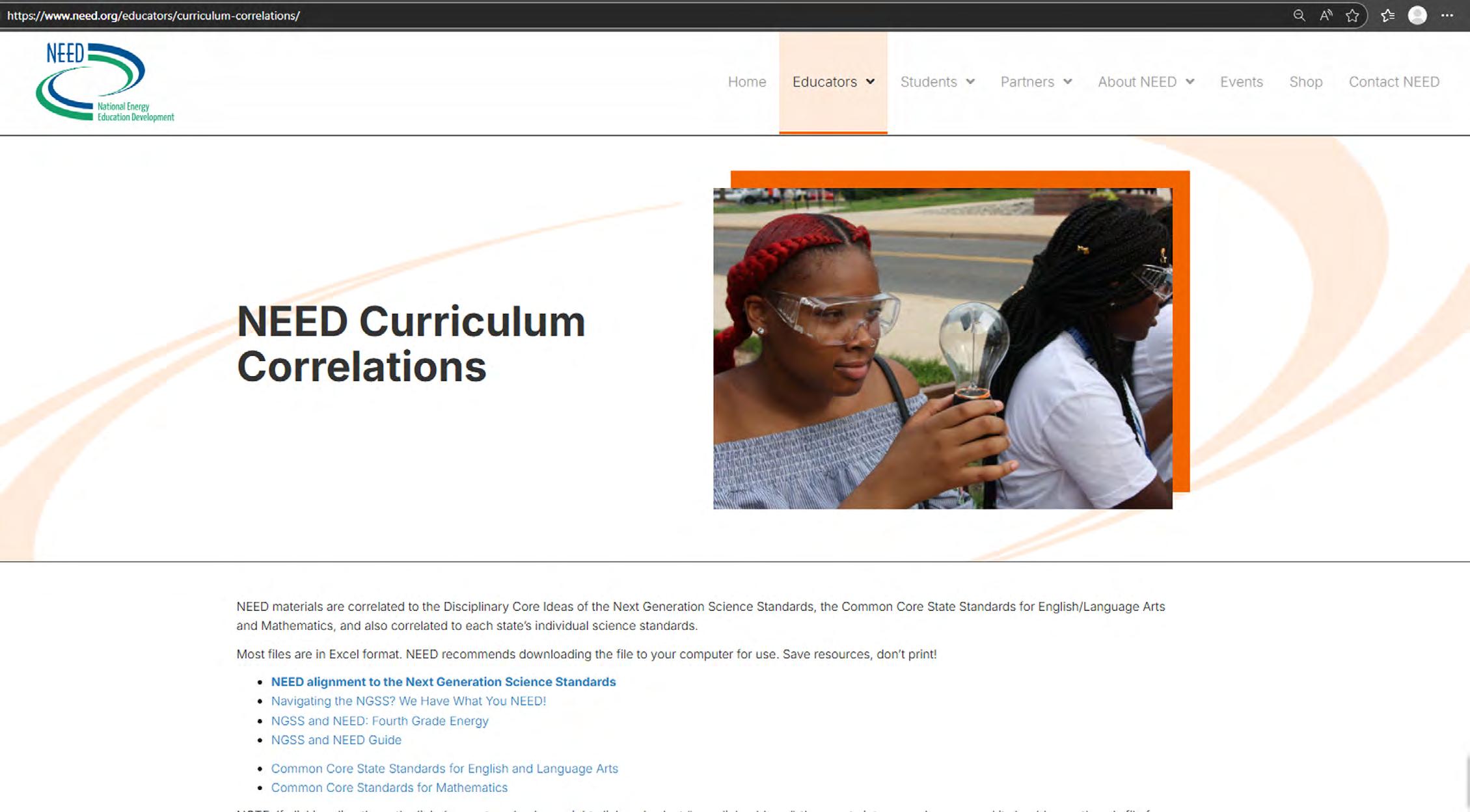
Materials
Station Materials in Kit
Teacher Demo
Station One
Station Two
Station Three
2 Containers of sand
Thermometers
Hand generated flashlight
Set of happy/sad spheres
Superball
Yo-yo
Toy car
Balloons
Tongs
Measuring tape
Container of baking soda
Empty plastic bags
Thermometer (metal)
15 mL Measuring cups
Hand warmers
Sealed plastic bag of iron oxide
Container of calcium chloride
Empty bottle for vinegar
Radiometer
Thermometers (plastic)
Solar panel with motor, fan, and disks
Station Four
Live wire
Bi-metal bar
Candle
Rubber bands
Tongs
Station Five
Glow sticks
Small nail
Large nail
Thin copper wires
Thick copper wires
Tin wire
DC microammeter
Alligator clips
Thermometer (pulled from teacher demo box)
Additional Materials Needed
Safety glasses
Cup of hot water
Meter stick (optional)
Safety glasses
Scissors
Vinegar
Water
Safety glasses
Ruler
Light source (bright sunlight, clamp light with halogen or incandescent bulb)
Protractor
C Battery
Safety glasses
Cup of hot water
Cup of ice water
Cup of room temperature water
Matches
4 Pieces of metal hanger (approximately 8 inches each)
Safety glasses
Thermometer
Cup of ice water
Cup of hot water
Apple
Metric ruler
Black permanent marker
Safety glasses
Station Six
Hand generated flashlight (use from Teacher Demo)
Coated wire (heavy gauge)
Motors (1 disassembled)
9-volt Battery
D Battery
Compass
Alligator clips
Battery holder
Large nail
Science of Energy
and
by calling 1-800-875-5029.
Tape
Safety glasses
Teacher Guide
! Important Safety Notes
All students should wear safety glasses while at any Intermediate Science of Energy station.
This kit contains latex balloons and rubber bands. Check to see if any of your students have latex allergies. If they do, the items should be removed from their stations.
Station One, Four, and Five require hot water. Review with students safe procedures for handling hot water. Hot water should be no hotter than 60°C (140°F).
The live wire in Station Four may spring out of the cup. Students should not peer directly over the demonstration, and should handle the live wire with tongs. Giving the students a clear glass or beaker to use in this demonstration may keep them from wanting to look directly over the cup.
Review procedure for open flame with students, as Station Four requires the use of flame.
Thermometers in this kit do not contain mercury. These thermometers are made with alcohol spirits and are safe for classroom use. Should they break during the course of this unit, you can dispose of the thermometer and parts as you would anything else in your classroom.
If the thermometers are placed in a substance that is too hot, the thermometer may break.
&Background
The Intermediate Science of Energy unit includes a teacher demonstration and six lab stations. Students are divided into six groups (or more, if needed), with each group responsible for learning and teaching the other groups about the experiments in their assigned station. Instructions, guides, masters, and explanatory articles are provided for the teacher and students. Throughout this unit, students are encouraged to record their thinking in science notebooks.
Time
Intermediate Science of Energy is designed to take as few as six class sessions of 45-60 minutes each. Teachers may choose to expand the time if their schedules allow.
Possible 6 Day Schedule
Possible Extended Schedule
Depending on time available and/or your class size, the number of groups and rotations can be increased by separating Stations Two and Three. Station Two can be separated into endothermic and exothermic processes, while Station Three can isolate the solar panel on its own, and Station Five can be split into two parts.
2Unit Preparation
Familiarize yourself with the equipment in the kit and procure the materials listed in the Additional Materials Needed section of the chart on page 5. Remove any materials not needed as the kit boxes may contain items used in the other Science of Energy units.
@Student Reporting Forms and Science Notebooks
In this unit, students may use the reporting forms provided or science notebooks to record their questions, hypotheses, data, observations, and conclusions as they work through each station. Choose the format depending on the needs of your students. If you choose to use the reporting forms, make copies of each station's reporting form for each student. These reporting forms can be found on pages 26-42. If you have chosen to use science notebooks with your class, sample template pages are provided on pages 24-25 for students to work through the stations. Make enough copies of this template so that students have enough room to record their work at each of the six stations. Also provide the station guides at each station so that students can draw their own versions of tables and charts.
It should be noted that not every station or part of each station emphasizes the identification of variables and composition of a hypothesis. This is due to the design of the activities within that station or part of the station. However, these components can easily be added at the teacher's discretion.
Hand out the Lab Safety Rules and review with students prior to any investigation. NOTE: For more information about energy, see the Intermediate Energy Infobook available for download from www.NEED.org/need-students/energy-infobooks, or www.NEED.org/shop.
A Vocabulary
Listed below are terms used in this Intermediate Science of Energy unit. Students will encounter these terms while going through each station. A glossary can be found on pages 100-101.
absorb alternating current ampule atom attract Celsius chemical energy chemical reaction collision compress conduct contract conversion convert current direct current elastic energy electrical energy electricity electrode electrolyte electromagnet endothermic energy energy level energy transformation ester exothermic expand Fahrenheit fission friction fusion generator gravitational potential energy
heat* hypothesis iron oxide kilowatt-hour kinetic energy Law of Conservation of Energy magnetic field mass molecular molecule motion energy nickel nonrenewable nuclear energy parallel perpendicular photovoltaic cell potential energy prediction radiant energy reaction rebound release renewable repel retention silicon temperature thermal energy* titanium transform transformation turbine vacuum
*PLEASE NOTE: In this unit, the terms thermal energy and heat may be used to mean the same thing; however, technically, they are not the same thing. Thermal energy is the sum of the energy of the molecules making up a substance - kinetic and potential. When this thermal energy is transferred from one place or object to another, it is called heat.
Activity One: Teacher Demonstration
Objectives
Students will be able to define energy and list examples of the work it enables us to do.
Students will be able to differentiate between kinetic and potential energy.
Students will be able to list the forms of energy, providing examples of items that store or use each form.
Students will be able to explain simple energy transformations.
Materials
2 Containers of sand (one container is completely full and one container is approximately one-third full)
2 Thermometers
Safety glasses
Teacher Demonstration: What Was Happening?, page 22
Thermometer master, page 43
Fahrenheit/Celsius Conversion master, page 44
Forms of Energy master, page 45
2 Preparation
Make copies of the Forms of Energy master for each student, or prepare a copy to project for the class.
A Vocabulary
Celsius
convert
energy
Fahrenheit
friction
motion energy
thermal energy
NOTE: For this activity, a more dramatic difference in temperature will be seen if temperatures are measured in degrees Fahrenheit instead of degrees Celsius. Choose the temperature scale that works best for your needs and for demonstration purposes.
Procedure
1. Open the containers of sand and place them on a table to stabilize temperature.
2. Use the Thermometer master to review how to read a thermometer, if necessary. Depending on your grade level and standards, explain how to convert Fahrenheit to Celsius or Celsius to Fahrenheit using the Fahrenheit/Celsius Conversion master.
3. Place one thermometer in each container. Compare the temperature reading of the two thermometers and record the results. Students should record the results independently or you can record it on the board.
4. Ask students, “If we shake both of these containers, what will happen to the temperature of the sand in each container? Explain your thinking.” Students should record a hypothesis. Instruct students to create a table like the one on the following page, or draw it on the board.
5. Place the lids on each container tightly.
6. Explain and model the shaking of the containers of sand. Each student should shake both containers at least ten times at the same time, one in his/her right hand and one in his/her left hand, then pass the containers to the next student. Or as a class you may discuss and use a different set-up to minimize variables.
7. While students are shaking the containers, ask them what they think they already know about energy. You may want to record their responses. Give the example that energy makes things move. Ask students to name a moving object and what moves it. Energy is moving the object. For example, a car is moved by burning gasoline, a sailboat by the wind, and a baseball by the energy in a person’s arm and hand. Explain that there are five main things energy helps us do: make things move, make heat, make light, make technology work (run electrical devices), and make things grow. Have students record these energy uses in their science notebooks and come up with examples of each.
8. Review the forms of energy and their definitions using the Forms of Energy master.
9. When all of the students have shaken the containers, open the containers and place a thermometer in each. Have two students read the thermometers and record the results on the board. Everyone should record results in their science notebooks using a table like the one below. Discuss the difference and why students think the temperatures changed the way they did.
10. Review the results of the sand investigation. Ask the class if anyone made a correct prediction about the temperature change. Ask students what may have caused the results. Use the Teacher Demonstration: What Was Happening? article to explain to students what was really happening in the containers.
Activity Two: Introduction to Energy Transformations
Objective
Students will be able to explain simple energy transformations.
Materials
Hand generated flashlight
Teacher Demonstration: What Was Happening?, page 22
Forms of Energy master, page 45
Procedure
A Vocabulary
Law of Conservation of Energy
transformation
Celsius
Fahrenheit
motion energy
thermal energy
1. Review the forms of energy using the Forms of Energy master. Give another demonstration of energy transformations using the hand generated flashlight. Use the Teacher Demonstration: What Was Happening? article to explain how the flashlight is working. Discuss with students the Law of Conservation of Energy, which states that energy cannot be created or destroyed, it can only change form or be transferred.
2. Ask the students to list or draw out energy transformations of common items in their lives.
Extension
To reinforce vocabulary focusing on energy transformations, use the activity Forms of Energy in the Round found on page 17.
Activity Three: Station Investigations
Objectives
Students will be able to explain simple energy transformations.
Students will be able to list the forms of energy and give examples.
Materials
Station materials (see page 5)
Lab Safety Rules master, page 46
Safety glasses
Copies of Station Guides and What Was Happening? articles for each station (see pages below)
Student reporting forms for each station (see pages below) or science notebooks
A Vocabulary
See Individual Station Guides
2 Preparation
Review the rotation scheme suggestions provided on the following page. Decide which one works best for your students and room layout, or modify to meet your needs.
Divide the class into six groups. If your class is large, you can separate Station Two, Station Three, and Station Five into two groups.
Organize your classroom into stations, with stations requiring warmer tap water (~40°C) to hot water (~50°C) near a faucet or water source. Station Three should be located near an electrical outlet.
Make several copies of each station guide to remain at each station. Students will not remove or write on these, unless otherwise directed.
Make copies of each What Was Happening? article for each student at the station. Do not pass these out until students are done with their initial investigation.
Answer keys for the station investigations are provided on pages 18-19. These answer keys are simply provided as a reference. Students may reflect upon data and observations that are not suggested within the answers, but still accurate based on their use of the materials. It is suggested that teachers have a good familiarity with the stations for this reason.
When conducting radiant energy transformation activities, it is suggested that teachers attempt to use sunlight or incandescent bulbs as available. Energy efficient bulbs, like LEDs, will not produce enough thermal energy in a short time to produce the desired experimental results. Traditional incandescent, heat lamps, or halogen incandescent bulbs are your best bet. However, a halogen incandescent bulb may not work as well with the PV cell in this station. The light from the halogen bulbs is of a slightly different wavelength. This wavelength of light may still operate the PV cell, but the cell itself may need to be held very closely to the bulb. Use caution in this case, so as to not melt the plastic. Some LEDs may power the solar cell, but it is suggested you test in advance to be sure. Sunlight and traditional incandescent bulbs will provide the best results for these activities.
Procedure
1. Explain to students that over the next few days they will be investigating energy transformations in a variety of different systems. Each group will be assigned a station. Everyone in the group is responsible for learning how to conduct and present the energy transformations taking place at their station. The first day everyone will focus on learning and becoming an expert at their station. Once all groups have learned their stations they will split up. Half of the group will stay at the station to present the energy transformations while the others rotate through the stations. The next day everyone will switch roles.
2. Review the Lab Safety Rules with the class.
3. Assign students to their groups. Give them the appropriate station guides. Students should read through the guides. Give the groups their materials and let them start investigating. Remind students that they should be recording observations and data.
4. Students work in groups to learn their assigned stations. Students should be recording data and observations, identifying the energy transformations, and explaining how and why the energy transformations occurred in their conclusions.
5. When students have finished their investigations, give them the What Was Happening? article that goes with their station. Students should read the article and compare what they read to what they thought was going on. Without erasing their own conclusions, students should answer the station conclusions found at the very end of each station guide.
Notes About Differentiating Instruction:
If more stations are needed to use with larger classes, several stations can be broken into parts. This can help those with pacing difficulties. Also, some stations, such as Station Four, are less challenging in content. Familiarize yourself with stations and assign stations to meet your students' needs.
Rotation Scheme A/B (more time, students presenting in working pairs)
Students are assigned in groups of four; two of these students are “A” students, and two are “B” students. All four learn their stations well enough to guide the rest of the class. On the first set of rotations, the A students remain with their stations while the B students rotate. On the second set, the B students remain with their stations while the A students rotate.
Rotation Scheme Jigsaw (less time, students presenting individually)
Students are assigned to each of the six stations, distributing them as equally as possible, to learn their stations well enough to guide the rest of the class. On rotation days, new groups are formed, one from each station (groups of six students), which then rotate through the stations.
*IMPORTANT NOTE: Regardless of the rotation scheme selected, the order of rotations will not matter or affect student learning, as all stations are independent of each other.
Activity Four: Presentation Planning
Objectives
Students will be able to explain simple energy transformations.
Students will be able to list the forms of energy, providing examples of items that store or use each form.
Materials
Station materials
Station Guides and What Was Happening? articles
Station Presentation Planning Guide, page 23
Procedure
1. Students should reflect and discuss what they learned in their station investigations. All students will need to understand what was happening at their station and be able to explain it to their peers during station rotations.
2. Using their written responses, the What Was Happening? article, and Station Presentation Planning Guide, students should decide how they will demonstrate and explain their station to their peers.
3. Students should practice presenting their station. Let students know how much time they will have to present their stations so they can practice in that time frame.
Activity Five: Station Rotations
Objectives
Students will be able to explain simple energy transformations.
Students will be able to list the forms of energy, providing examples of items that store or use each form.
Materials
Station materials
Station Guides
Safety glasses
2 Preparation
Set out a fresh apple at Station Five.
Make sure each station has an adequate amount of consumable supplies.
Have a supply of ice and hot water ready.
Procedure
1. Put students into new groups based on the rotational scheme you've selected. Follow the scheme instructions on page 10.
2. Students will rotate through stations for as many days as needed for all groups to observe the stations. Everyone will have a chance to present, and everyone will rotate through the other stations.
3. Depending on the amount of time in your class period, set a time limit for station rotations. Give students a two minute warning and one minute warning before having groups rotate.
Activity Six: Energy Flows
&Background
Nuclear energy produced the radiant energy from the sun. Inside the sun’s core, isotopes of hydrogen are fused together to form atoms of helium. Fusion occurs because of the tremendous heat and gravitational forces inside the sun’s core. The resulting atom of helium has less mass than the original atoms of hydrogen. This missing mass is changed into energy—radiant energy. Accordingly, the increase in the temperature of the sand used in the teacher demonstration is the result of nuclear energy. In fact all energy transformations can be traced back to nuclear energy: fission, fusion, or radioactive decay. The energy stored in fossils fuels is a result of sunlight from millions of years ago. Wind, hydropower, and biomass energy are also a result of the sun's radiant energy. Geothermal energy is due to pressure, heat, and radioactive decay of elements in the Earth's core. The electricity produced in a nuclear power plant is the result of the splitting (fission) of heavy uranium atoms into lighter atoms. When fission occurs, mass is changed into energy. All energy transformations can be traced back to nuclear energy. Albert Einstein understood that energy is required to make mass, and that if mass disappears energy is released. Einstein explained the relationship between energy (E) and mass (m) as E=mc2 (where "c" is the speed of light).
A Note About Your Hand Generated Flashlight
This flashlight stores energy using a NiMH (Nickel Metal Hydride) rechargeable battery. This battery will hold a charge for approximately two hours. For demonstration purposes, teachers may wish to “drain” the charge on the battery by turning on the flashlight and allowing it to remain lit for some time, in order to show the flashlight starting from zero to generate light. If the light is mostly drained and faint, students will immediately be able to see the light brightening as they shake and add energy. From this point, however, it may take extended amounts of shaking to fully recharge the battery and to emit a bright light. Refer to the charging instructions on the box for more information regarding recharging the battery.
If you trace the energy flow from the thermal energy in a bending hanger it will eventually lead back to the sun. You put motion from the muscles in your hands and arms into the hanger. Your muscles got their energy from the chemical energy in the food you ate. The plants you ate transformed radiant energy from the sun into the chemical energy. The sun gets its energy from nuclear fusion. So the energy flow from the sun to the hanger is: nuclear energy, to radiant energy, to chemical energy, to motion energy, to thermal energy.
Objectives
Students will be able to list the forms of energy, providing examples of items that store or use each form.
Students will be able to explain simple energy transformations.
Students will be able to trace the energy flow of a common item back to the sun.
Materials
Hand generated flashlight
Energy Transformations master, page 47
2 Preparation
Energy Flow Cards, pages 87-89
Make enough copies of the Energy Flow Cards so that each student or group has a set.
Cut out each of the cards and fold on the dotted lines. Assemble groupings of the cards so that each group will have a full set.
Procedure
1. Review the stations and transformations observed briefly with the class.
2. Revisit the flashlight from Activity Two and ask a student to make it light. Ask students if they can trace the transformation of that flashlight further than simply motion to light. Ask them if they can trace the transformation or energy flow the whole way back to the sun. Jot down or record their answers on the board.
3. Project the Energy Transformations master and discuss student answers. Ask students to try to trace the flow of energy from a different station item, for example, the metal hanger in Station 4. Highlight information from the teacher background information above, if necessary.
4. Distribute the shuffled set of cards to students or groups of students. Explain to students that energy flows exist in all items. Some of those flows include living items – like a food chain, for example. Some can be even longer and include living and non-living items. Ask students to put the cards in the correct order of their energy flow starting with the sun. Observe students, helping them to organize if needed.
5. Redistribute the cards so that each group has tried each of the sets of cards.
Extension
Regroup the cards so that two or more sets are in one stack with only one sun. Distribute to the students and have them form a human chain, putting their cards in order of the energy flow. Students can hold hands or pieces of string. Some students may have to connect to more than one other student.
Activity Seven: Energy Sources
Objective
Students will be able to describe how energy is stored in the major energy sources. Materials
Forms and Sources of Energy activity sheet, page 48
How Wind is Formed master, page 49
Harnessing the Wind to Generate Electricity master, page 50
Wind Energy Flow master, page 51
How Coal Was Formed master, page 52
Burning Fossil Fuels to Generate Electricity master, page 53
Energy Flow Cards, pages 87-89
Coal Story (optional), pages 54-56
2 Preparation
Make enough copies of the Forms and Sources of Energy sheet so each student has a copy.
Prepare copies of the masters for projection and discussion.
Make copies of the Energy Flow Cards so that each student or group has a set. The cards are numbered so it is easy to see which cards belong to the set. Cut out the cards and assemble into stacks by sets.
Procedure
1. Distribute the forms and sources activity sheet to students.
2. Give a brief description of the ten major sources of energy and explain the terms renewable and nonrenewable. (Use the Intermediate Energy Infobook as a reference. Infobooks can be downloaded from www.need.org/need-students/energy-infobooks/, or www.NEED.org/shop.)
3. Have students complete the Forms and Sources of Energy activity.
4. Discuss the answers to the activity. Answers are listed on page 20.
5. Ask students if they think they could trace the energy flow the whole way from an energy source back to the sun.
6. Project the How Wind is Formed and Harnessing the Wind to Generate Electricity masters. Discuss with students how the wind is formed and how a wind turbine can generate energy in the form of electricity. Ask students how much of our energy comes from wind?
7. Project the Wind Energy Flow master. Ask students to go through and label each part of this energy flow with the forms of energy present. Discuss the answers as a class.
8. Project the How Coal Was Formed master and Burning Fossil Fuels to Generate Electricity master. Discuss the differences between a wind turbine and a thermal energy plant for generating electricity.
9. Ask students to draw out an energy flow for coal like they did previously for wind.
10. Distribute the Energy Flow Cards to the class. CONTINUED ON NEXT PAGE
11. Direct students to add or create new cards to incorporate a source or sources of energy. Have them trade with other groups so that those groups can re-order the cards.
Extensions
Read A Coal Story with students (pages 55-56). Give the class props or allow them to create props to act out the energy flow in the story.
Have students write their own story about a different source of energy to mimic A Coal Story. Have them act out their flow story with props.
For more information on energy sources, energy consumption, and energy conservation, use the Intermediate Energy Infobook and Intermediate Energy Infobook Activities available for free download at www.NEED.org/shop
Unit Extensions
Reinforce vocabulary and concepts with the Forms of Energy Fun activities found on pages 93-95. Answers can be found on page 20.
Invite other classes of all ages to rotate through the stations and have your class teach others about energy transformations.
Unit Assessment and Evaluation
There are multiple options for evaluating student learning in this unit:
Evaluate students on their group work including: their ability to work as a team to learn the material and prepare their experiment; their ability to teach students from other teams about their experiment; and their ability to handle equipment properly and safely. Devise a rubric and share it with the class.
Assess students’ reporting forms or science notebooks for developing science process skills and their understanding of the concepts covered at each station. A sample rubric is provided below.
Have students create an Intermediate Science of Energy Brochure using the rubric on page 90.
Use the Intermediate Science of Energy Assessment on pages 91-92. Answers can be found on page 21.
@Student Reporting Form or Science Notebook Rubric
This is a sample rubric that can be used with student reporting forms or science notebooks. You may choose to only assess one area at a time, or look at an investigation as a whole. It is suggested that you share this rubric with students and discuss the different components ahead of time.
4 Written explanations illustrate accurate and thorough understanding of scientific concepts. The student independently conducts investigations and designs and carries out his or her own investigations.
3 Written explanations illustrate an accurate understanding of most scientific concepts.
2 Written explanations illustrate a limited understanding of scientific concepts.
1 Written explanations illustrate an inaccurate understanding of scientific concepts.
The student follows procedures accurately to conduct given investigations, begins to design his or her own investigations.
The student may not conduct an investigation completely, parts of the inquiry process are missing.
The student needs significant support to conduct an investigation.
Comprehensive data is collected and thorough observations are made. Diagrams, charts, tables, and graphs are used appropriately. Data and observations are presented clearly and neatly with appropriate labels.
Necessary data is collected. Observations are recorded. Diagrams, charts, tables, and graphs are used appropriately most of the time. Data is presented clearly.
Some data is collected. The student may lean more heavily on observations. Diagrams, charts, tables, and graphs may be used inappropriately or have some missing information.
The student clearly communicates what was learned and uses strong evidence to support reasoning. The conclusion includes application to real life situations.
The student communicates what was learned and uses some evidence to support reasoning.
The student communicates what was learned but is missing evidence to support reasoning.
Data and/or observations are missing or inaccurate. The conclusion is missing or inaccurate.
Instructions BINGO Science of Energy
Get Ready
Duplicate as many Science of Energy Bingo sheets (found on page 96) as needed for each person in your group. In addition, decide now if you want to give the winner of your game a prize and what the prize will be.
Get Set
Pass out one Science of Energy Bingo sheet to each member of the group.
Go
PART ONE: FILLING IN THE BINGO SHEETS
Give the group the following instructions to create bingo cards:
This bingo activity is very similar to regular bingo. However, there are a few things you’ll need to know to play this game. First, please take a minute to look at your bingo sheet and read the 16 statements at the top of the page. Shortly, you’ll be going around the room trying to find 16 people about whom the statements are true so you can write their names in one of the 16 boxes.
When I give you the signal, you’ll get up and ask a person if a statement at the top of your bingo sheet is true for them. If the person gives what you believe is a correct response, write the person’s name in the corresponding box on the lower part of the page. For example, if you ask a person question “D” and they give you what you think is a correct response, then go ahead and write the person’s name in box D. A correct response is important because later on, if you get bingo, that person will be asked to answer the question correctly in front of the group. If they can’t answer the question correctly, then you lose bingo. So, if someone gives you an incorrect answer, ask someone else! Don’t use your name for one of the boxes or use the same person’s name twice.
Try to fill all 16 boxes in the next 20 minutes. This will increase your chances of winning. After the 20 minutes are up, please sit down and I will begin asking players to stand up and give their names. Are there any questions? You’ll now have 20 minutes. Go!
During the next 20 minutes, move around the room to assist the players. Every five minutes or so tell the players how many minutes are remaining in the game. Give the players a warning when just a minute or two remains. When the 20 minutes are up, stop the players and ask them to be seated.
PART TWO: PLAYING BINGO
Give the class the following instructions to play the game:
When I point to you, please stand up and in a LOUD and CLEAR voice give us your name. Now, if anyone has the name of the person I call on, put a big “X” in the box with that person’s name. When you get four names in a row—across, down, or diagonally—shout “Bingo!” Then I’ll ask you to come up front to verify your results.
Let’s start off with you (point to a player in the group). Please stand and give us your name. (Player gives name. Let’s say the player’s name was “Joe.”) Okay, players, if any of you have Joe’s name in one of your boxes, go ahead and put an “X” through that box.
When the first player shouts “Bingo,” ask them to come to the front of the room and give their name. Then ask them to tell the group how their bingo run was made, e.g., down from A to M, across from E to H, and so on.
Science of Energy Bingo is a great icebreaker for a NEED workshop or conference. As a classroom activity, it also makes a great introduction to an energy unit.
2Preparation
5 minutes
Time
45 minutes
Bingos are available on several different topics. Check out these resources for more bingo options! All are available for free download at www.NEED.org/shop.
Biomass Bingo—Energy Stories and More
Change a Light Bingo—Energy Conservation Contract
Coal Bingo—Coal guides
Energy Bingo—Energy Games and Icebreakers
Energy Efficiency Bingo— School Energy Experts and School Energy Managers
Hydropower Bingo— Hydropower guides
Hydrogen Bingo—H2 Educate
Nuclear Energy Bingo— Nuclear guides
Oil and Natural Gas Bingo— Oil and Natural Gas guides
Solar Bingo—Solar guides
Wind Energy Bingo—Wind guides
Now you need to verify the bingo winner’s results. Ask the bingo winner to call out the first person’s name on their bingo run. That player then stands and the bingo winner asks them the question which they previously answered during the 20-minute session. For example, if the statement was “can name two renewable sources of energy,” the player must now name two sources. If they can answer the question correctly, the bingo winner calls out the next person’s name on their bingo run. However, if they do not answer the question correctly, the bingo winner does not have bingo after all and must sit down with the rest of the players. You should continue to point to players until another person yells “Bingo.”
SCIENCE OF ENERGY BINGO
A. Knows what type of reaction releases thermal energy
E. Knows the force responsible for the attraction between the Earth and nearby masses
I. Knows where most energy on Earth originates
M. Knows how an electric generator works
B. Knows the form of energy that comes from the sun
F. Knows why rubbing your hands together makes them warm
J. Knows what type of reaction absorbs thermal energy
N. Knows what device turns energy from the sun directly into electricity
ANSWERS
C. Knows one way to store energy
G. Can name a form of kinetic energy
K. Has used a radiant clothes dryer
O. Can name a form of potential energy
D. Knows the form in which our bodies store energy
H. Has visited a thermal power plant
L. Knows what form of energy is stored in most energy sources
P. Knows what energy can be transformed into
Anyone who has visited a nuclear, coal, waste-to-energy, or natural gas power plant has visited a thermal power plant
Anyone who has hung wet clothes on a line outside has used a radiant clothes dryer
Forms of Energy in the Round Instructions
Get Ready
Copy one set of the Forms of Energy in the Round Cards on pages 97-99 on card stock and cut into individual cards.
Have a class set of the Intermediate Energy Infobooks available for quick reference.
Get Set
Distribute one card to each student. If you have cards left over, give some students two cards so that all of the cards are distributed.
Have the students look at their bolded words at the top of the cards. Give them five minutes to review the information about their words using the Intermediate Energy Infobooks.
Go
Choose a student to begin and give the following instructions:
Read the question on your card. The student with the correct answer will stand up and read the bolded answer, “I have _____.”
That student will then read the question on their card, and the round will continue until the first student stands up and answers a question, signaling the end of the round.
If there is a disagreement about the correct answer, have the students listen to the question carefully looking for key words (forms versus sources, for example) and discuss until a consensus is reached about the correct answer.
ANSWER KEY
STARTING WITH CHEMICAL ENERGY’S CLUE:
NUCLEAR FUSION
POTENTIAL ENERGY
CONDUCTOR
RADIANT ENERGY
LAW OF CONSERVATION OF ENERGY
MOTION
PHOTOSYNTHESIS
EXOTHERMIC PROCESS
ELECTRICAL ENERGY
CHEMICAL CHANGE
THERMAL ENERGY
ENERGY
PHOTOVOLTAIC CELL
KINETIC ENERGY
INERTIA
ELASTIC ENERGY
GRAVITY
NUCLEAR FISSION
NUCLEAR ENERGY
INSULATOR
CONVECTION
GENERATOR SOUND
REFLECTION
FRICTION
PHYSICAL CHANGE
ENDOTHERMIC PROCESS
VISIBLE LIGHT
CONDUCTION
CHEMICAL ENERGY
Forms of Energy in the Round is a quick, entertaining game to reinforce information about energy sources, forms of energy, and general energy information from the Intermediate Energy Infobook.
2Preparation
10 minutes
Time
20–30 minutes
Alternative Instructions
Give each student or pair a set of cards.
Students will put the cards in order, taping or arranging each card so that the answer is directly under the question.
Have students connect the cards to fit in a circle or have them arrange them in a column.
“In the Rounds” are available on several different topics. Check out these resources for more fun “In the Round” examples! All are available for free download at NEED.org/shop.
Coal in the Round—Exploring Coal
Conservation in the Round— School Energy Experts and School Energy Managers
Hydrogen in the Round—H2 Educate
Oil and Natural Gas Industry in the Round—Fossil Fuels to Products, Exploring Oil and Natural Gas
Uranium in the Round— Nuclear guides
Solar Energy in the Round— Energy from the Sun
Station Investigation Answer Keys
Station One
Parts One and Two
The bouncing spheres demonstrated how gravitational potential energy (GPE) is transformed into kinetic energy, and then back into GPE when the sphere rebounds off of the table. Not all of the kinetic energy is transformed back into GPE, as demonstrated by the decrease in the height of the bounce. Some of the energy is dissipated to the air and surface as sound and thermal energy. Hot water added thermal energy to the spheres, which caused them to bounce higher. Students’ answers will vary when discussing the real world applications.
Part Three
The toy car and balloon transform elastic energy into motion energy, and some sound and thermal energy. The yo-yo transforms gravitational potential energy into motion energy.
Station Two
Part One
The temperature of the vinegar decreased when baking soda was added. The chemicals absorbed some thermal energy when they reacted. The transformation observed was chemical energy to thermal energy.
Part Two
The temperature of the water increased when calcium chloride was added. The chemicals released some thermal energy when they reacted. The chemical energy was transformed into thermal energy.
Part Three
When iron is exposed to oxygen, it reacts with the oxygen to form rust, and thermal energy is released. The chemical energy in the oxygen is transformed to thermal energy.
Station Three
Part One
Direct sunlight causes the temperature of an object to increase because it absorbs the energy. Radiant energy is transformed into thermal energy, as evidenced by the increase in temperature.
Part Two
The vanes in the radiometer absorb the light that reaches them. The black sides of the vanes absorb more thermal energy than the white sides, and they get warmer. The increased thermal energy of the black vanes is transferred to the air molecules next to the black vanes and the molecules start to move faster, pushing on the black sides of the vanes. This causes the radiometer to rotate in a direction away from the light on the black side and toward the light on the white side. Radiant energy is transformed into thermal energy, and thermal energy is transformed into motion energy.
Part Three
Tilting the solar panel away from the light source caused the motor to spin slower, indicating that less electrical energy was being produced by the solar panel. The solar panel transforms radiant energy into electrical energy and the motor of the fan transforms electrical energy into motion energy.
Station Four
Part One
Bending the hanger causes the atoms in the metal to rub against each other, creating more friction and subsequently heating up. The motion energy of the metal is transformed into thermal energy.
Part Two
Stretching a rubber band causes it to release thermal energy as its molecules are stressed and stretched, and it feels warmer. Relaxing the rubber band causes it to absorb thermal energy as the molecules relieve their stress and come back together, and it feels cooler. Motion energy is transformed into thermal energy.
Part Three
The thermal energy of the hot water was transferred to the live wire, and it moved back into its original, straight shape. The thermal energy was transformed into motion energy.
Part Four
The thermal energy from the burning candle caused the bi-metal bar to bend. The bending is caused by uneven expansion of the two metals in the bar when they are heated. Because stainless steel always expands more than nickel, the bi-metal bar will always bend away from the stainless steel side and toward the nickel side. Thermal energy is transformed into motion energy.
Station Five
Part One
When the glow stick was heated by the warm water, it glowed brighter, indicating that the chemical reaction inside the glow stick was progressing at a faster rate. When placed in the ice water, the glow stick became dimmer, indicating that the chemical reaction was slowing down. The chemical energy inside the glow stick is transformed into radiant energy.
Part Two
When the wires were inserted deeper into the apple, more surface area of metal was exposed to the interior of the apple, allowing the chemical reaction to progress more rapidly. The amount of electric current indicated by the meter increased. Thicker wires make more material available to react with the compounds in the apple, and the reaction increases to produce greater amounts of electrical energy. In general, the higher the concentration of material, and the greater the surface area of the substance, the faster the chemical reaction will occur. Chemical energy was being transformed into electrical energy.
Station Six
Part One
When electric current flows through a wire, it generates a magnetic field. This will cause the needle of a compass to move when they are brought near to each other. The magnetic field of the wire and the magnetic field of the compass needle align. The chemical energy in the battery is transformed into electrical energy. The electrical energy in the wire is then transformed into motion energy in the compass needle.
Part Two
A hand generated flashlight and motor work based on the same concept – the interaction between motion energy and electrical energy. The flashlight uses motion energy to generate electrical energy inside, and then further by transforming the electrical energy into radiant energy in the light bulb inside the flashlight. A motor uses electrical energy to generate motion energy, which can then be used to do other things, like turning a fan or operating a machine. A generator and a motor have the same parts but perform the opposite transformation: motion to electricity, or electricity to motion.
Answer Keys
Forms and Sources of Energy, page 48
NONRENEWABLE
Petroleum - chemical
Coal - chemical
Natural Gas - chemical
Uranium - nuclear
Propane - chemical
RENEWABLE
Biomass - chemical
Hydropower - motion
Wind - motion
Solar - radiant
Geothermal - thermal
Chemical - 87.5%, Nuclear - 8.7%, Motion - 2.5%, Radiant - 1.2%, Thermal - 0.1%*
Nonrenewables - 90.9%, Renewables - 9.1%*
*Total may not equal 100% due to independent rounding.
Energy Crossword, page 93
ACROSS
2. kinetic
4. endothermic
6. chemical
9. react
11. photovoltaic
12. light
13. nuclear
14. solar
Energy Scramble, page 94
ELECTRICITY, HEAT, MOTION, LIGHT, GROW, ENERGY
Energy Transformations, page 94
1. radiant to electrical
2. chemical to electrical
3. chemical to motion
4. motion to electrical
5. chemical to thermal
6. chemical to radiant
7. chemical to electrical and radiant
Energy Flow, page 95
Radiant (Light) Energy - 8
Chemical Energy (Corn) - 3
Radiant Energy - 2
Chemical Energy (Girl) - 4
DOWN
1. potential
3. energy
5. elastic
7. thermal
8. exothermic
10. electrical
8. radiant to thermal and motion
9. chemical to thermal and radiant
10. nuclear to radiant and thermal
11. chemical to motion and radiant
12. chemical to motion and thermal
13. chemical to motion and thermal and sound
14. chemical to radiant and thermal and sound
Motion Energy - 5
Nuclear Energy - 1
Electrical Energy - 7
Electrical Energy (Battery) - 6
Answer Keys
Intermediate Science of Energy Assessment,
pages 91-92
1. The ball will not return to the original height because some of the energy will be transformed into other energy forms such as thermal and sound energy.
2. Examples:
Compressing a spring and letting it go
Rock sitting on a hill, rolls down the hill Air in a balloon, letting it go and it flies
3. It is exothermic because it is a reaction that produces heat. Chemical energy is transformed to thermal energy.
4. Radiant energy is changed into thermal energy in the bulb, which is absorbed or reflected, exciting air molecules and creating motion.
5. Radiant energy is changed to electrical energy.
6. Both items change thermal energy to motion.
7. The rate of the chemical reaction increases with heat added and decreases with heat being removed. Chemical energy is changed to radiant energy.
8. Chemical energy is changed to electrical energy. The size, type, and depth of metal affect the transformation of energy.
9. Shaking the flashlight moves the magnet through a coil of copper wire that flows to the capacitor or battery where it is stored as electricity. This electricity powers the light.
10. The sun’s nuclear energy transforms to radiant energy, to chemical energy in plants, to chemical energy in people, which then transforms into motion energy to pedal the bike.
Teacher Demonstration: What Was Happening?
Containers of Sand, pages 7-8
The energy we use is stored in different forms. Energy does not disappear, it just changes forms. This is the Law of Conservation of Energy. This law states that energy is neither created nor destroyed. There are two containers of sand, one filled about one-third of the way and the other filled to the top. Since they have been in the same environment, they should be the same temperature.
After each student has shaken the containers, the temperature was recorded. You should have seen a two to five degree Celsius increase with the third-full one, less with the full one. The difference will be more apparent on the Fahrenheit scale since the increments are smaller on the Fahrenheit scale. A five-degree difference in Celsius equals a nine-degree difference in Fahrenheit.
Shaking the container, we moved the grains of sand, causing them to collide with each other. They rubbed against each other, causing friction between the particles and producing thermal energy (heat). We transformed motion energy into thermal energy (heat). The increase in temperature was greater for the container that was only one-third full, because the partially full container has more space in it for the sand to move around. The grains of sand collide with each other with greater velocity. More velocity means more kinetic energy (motion). In the container filled with sand, the grains of sand have little space to move.
Energy Transformations, page 8
The energy transformation from shaking these containers of sand originated from our sun.
Let’s start with the thermal energy, or heat, we produced as a result of the motion our bodies provided. Our bodies got the energy to shake the bottle from the food we ate. The energy was stored in the food as chemical energy in the bonds of the molecules. Chemical energy is stored in food through photosynthesis. Sunlight, or radiant energy, changes water and carbon dioxide into the glucose and oxygen in plants. Glucose is a sugar with lots of energy—chemical energy.
Additionally, some amount of energy was transferred to each container by our hands. The full container has less of a temperature increase because the energy transferred was spread out over a greater amount of sand. The less full container has less sand, and thus the energy transformation was higher, resulting in a higher temperature.
Hand Generated Flashlight, pages 8, 12
A hand generated flashlight works by converting motion into electrical energy. Electricity is powering the light and charging the capacitor or battery to use when not shaking.
Inside of the flashlight is a stationary coil of wire. There is also one magnet that passes through the coil of wire when the flashlight is gently shaken. This magnet is called the "charging" magnet. At each end of the inner housing is sometimes an additional magnet. These magnets are oriented to repel the charging magnet so it moves smoothly through the coil of wire. This is called a magnetic repulsion recoil system. There may also be rubber bumpers, rather than magnets, that cause the central magnet to recoil.
As the flashlight is shaken, electricity is generated as the charging magnet passes back and forth through the coil of wire. The electricity is stored in a capacitor or battery. When the flashlight is turned on, the capacitor or battery delivers electricity to a light emitting diode (LED). The light will stay on as long as the capacitor or battery is charged.
Station #_____ Presentation Planning Guide
Present the question.
PRESENTATION ELEMENTS
WHO IS RESPONSIBLE?
Demonstration: What will you do?
Ask the group to identify the energy transformations.
Explain what was happening at your station.
TITLE:
QUESTION:
HYPOTHESIS:
OBSERVATIONS AND DATA:
NEXT, READ THE ‘WHAT WAS HAPPENING?’ ARTICLE. SUMMARIZE THE ARTICLE BELOW:
REAL WORLD APPLICATION:
Station One Reporting Form
PART ONE: SPHERES
Independent
Hypothesis:
Data and Observations:
PART TWO: SPHERES IN HOT WATER
Independent Variables (IV)
Data
PART ONE AND TWO CONCLUSIONS: SPHERES
Energy Transformation(s)
PART THREE: TOYS
Hypothesis:
PART THREE CONCLUSION: TOYS
Energy Transformation(s)
STATION ONE CONCLUSIONS
QUESTIONS FOR FURTHER INVESTIGATION
Station Two Reporting Form
PART ONE: BAKING SODA AND VINEGAR
Data and Observations:
VINEGAR
VINEGAR AND BAKING SODA
PART ONE CONCLUSION: BAKING SODA AND VINEGAR
Energy Transformation(s)
PART TWO: CALCIUM CHLORIDE AND WATER
Data and Observations:
AND CALCIUM CHLORIDE
PART TWO CONCLUSION: CALCIUM CHLORIDE AND WATER
Energy Transformation(s)
TEMPERATURE
INITIAL AFTER 3 MINUTES 3 MINUTES AFTER SEALING NEW PACKET
OLD PACKET
PART THREE CONCLUSION: HAND WARMERS
Energy Transformation(s)
STATION TWO CONCLUSIONS
QUESTIONS FOR FURTHER INVESTIGATION
OBSERVATIONS
Station Three Reporting Form
PART ONE: SUNLIGHT AND SHADE
Independent Variables (IV):__________________________________________________________________________________________
Dependent Variables (DV):___________________________________________________________________________________________
Constants: ________________________________________________________________________________________________________
Hypothesis:
Data and Observations:
THERMOMETER IN SUN OR DIRECT LIGHT
THERMOMETER IN THE SHADE OR OUT OF DIRECT LIGHT
PART ONE CONCLUSION: SUNLIGHT AND SHADE
Energy Transformation(s)
PART TWO: RADIOMETER
RADIOMETER DIAGRAM
Data and Observations:
AMOUNT OF LIGHT
PART TWO CONCLUSION: RADIOMETER
Energy Transformation(s)
RADIOMETER OBSERVATIONS
PART THREE: SOLAR PANEL
Independent Variable (IV):__________________________________________________________________________________________
Dependent Variable (DV):___________________________________________________________________________________________
Constants
Hypothesis:
Data and Observations:
PART THREE CONCLUSION: SOLAR PANEL
Energy Transformation(s)
STATION THREE CONCLUSIONS
QUESTIONS FOR FURTHER INVESTIGATION
Station Four Reporting Form
PART ONE: THE HANGER
HANGER OBSERVATIONS
PART ONE CONCLUSION: THE HANGER
Energy Transformation(s)
PART TWO: THE RUBBER BAND
RUBBER BAND OBSERVATIONS STRETCHED CONTRACTED
PART TWO CONCLUSION: THE RUBBER BAND
Energy Transformation(s)
PART THREE: THE LIVE WIRE
Independent Variable (IV):__________________________________________________________________________________________
Dependent Variable (DV):___________________________________________________________________________________________
Constants:
Hypothesis:
Data and Observations:
PART THREE CONCLUSION: THE LIVE WIRE
Energy Transformation(s)
BI-METAL BAR DIAGRAM
Bimetal Bar
Stainless Steel Nickel VIEW FROM ABOVE
COMPARE DIAGRAM AND ACTUAL BAR
BI-METAL BAR AND CANDLE DIAGRAM
OBSERVATIONS
BI-METAL BAR AND ICE WATER DIAGRAM
OBSERVATIONS
PART FOUR CONCLUSION: THE BI-METAL BAR
Energy Transformation(s)
STATION FOUR CONCLUSIONS
QUESTIONS FOR FURTHER INVESTIGATION
Station Five Reporting Form
PART ONE: GLOW STICKS
Independent Variables (IV):__________________________________________________________________________________________
Dependent Variables (DV):___________________________________________________________________________________________
Constants: ________________________________________________________________________________________________________
Hypothesis:
GLOW STICK DIAGRAM
Data and Observations:
GLOW STICK IN COLD H2O
GLOW STICK IN HOT H2O
GLOW STICK AT ROOM TEMPERATURE PART ONE
OBSERVATIONS
Independent Variables (IV):__________________________________________________________________________________________
Dependent Variables (DV):___________________________________________________________________________________________
Constants
Hypothesis:
APPLE BATTERY DIAGRAM
OBSERVATIONS
DATA TABLE 1
DATA TABLE 2
Energy Transformation(s)
STATION FIVE CONCLUSIONS
QUESTIONS FOR FURTHER INVESTIGATION
Station Six Reporting Form
PART ONE: BATTERY AND COMPASS
OBSERVATIONS
HEAVY-GAUGE WIRE PARALLEL TO COMPASS NEEDLE
HEAVY-GAUGE WIRE PERPENDICULAR TO COMPASS NEEDLE
HEAVY-GAUGE WIRE WITH ELECTRIC CURRENT PARALLEL TO COMPASS NEEDLE
HEAVY-GAUGE WIRE WITH ELECTRIC CURRENT PERPENDICULAR TO COMPASS NEEDLE
PART ONE CONCLUSION: BATTERY AND COMPASS
Energy Transformation(s)
PART TWO: HAND GENERATED FLASHLIGHT AND MOTORS
HAND GENERATED FLASHLIGHT DIAGRAM
HOW IT WORKS AND OBSERVATIONS
DISASSEMBLED MOTOR DIAGRAM
OBSERVATIONS
PART TWO CONCLUSION: HAND GENERATED FLASHLIGHT AND MOTORS
ASSEMBLED MOTOR DIAGRAM
Energy Transformation(s)
QUESTIONS FOR FURTHER INVESTIGATION
Thermometer
A thermometer measures temperature. The temperature of a substance is a measure of the average amount of kinetic energy in the substance. This thermometer is a long, glass tube filled with colored alcohol. Alcohol is used in many thermometers because it expands in direct proportion to the increase in kinetic energy or temperature.
Temperature can be measured using many different scales.
The scales we use most are:
Celsius
The Celsius (C) scale uses the freezing point of water as 0oC and the boiling point of water as 100oC.
Fahrenheit
The Fahrenheit (F) scale uses the freezing point of water as 32oF and the boiling point of water as 212oF.
In the United States, we usually use the Fahrenheit scale in our daily lives, and the Celsius scale for scientific work. People in most countries use the Celsius scale in their daily lives as well as for scientific work.
Notice the numerical difference between the freezing and boiling points of water are different on the two scales. The difference on the Celsius scale is 100, while the difference on the Fahrenheit scale is 180. There are more increments on the Fahrenheit scale because it shows less of an energy change with each degree.
BOILING POINT OF WATER
Fahrenheit/Celsius Conversion
On the Fahrenheit scale, the freezing point of water is 32° and the boiling point of water is 212°.
On the Celsius scale, the freezing point of water is 0° and the boiling point of water is 100°.
To convert from Celsius to Fahrenheit, multiply the C number by 180 100 or 9 5 , then add 32, as shown in the formula below.
F = (C x 9 5 ) + 32
If C = 5
F = (5 x 9 5 ) + 32
F = 9 + 32
F = 41
To convert from Fahrenheit to Celsius, subtract 32 from the F number, then multiply by
or 5 9 as shown in the formula below.
C = (F - 32) x 5 9
If F = 50
C = (50 - 32) x 5 9
C = 18 x 5 9
C = 10
e Forms of Energy
All forms of energy fall under two categories:

POTENTIAL
Stored energy and the energy of position (gravitational).
CHEMICAL ENERGY is the energy stored in the bonds between atoms in molecules. Gasoline and a piece of pizza are examples.
NUCLEAR ENERGY is the energy stored in the nucleus or center of an atom – the energy that holds the nucleus together. The energy in the nucleus of a plutonium atom is an example.
ELASTIC ENERGY is energy stored in objects by the application of force. Compressed springs and stretched rubber bands are examples.
GRAVITATIONAL POTENTIAL
ENERGY is the energy of place or position. A child at the top of a slide is an example.
KINETIC
The motion of waves, electrons, atoms, molecules, and substances.
RADIANT ENERGY is electromagnetic energy that travels in transverse waves. Light and x-rays are examples.
THERMAL ENERGY or "heat" is the internal energy in substances – the vibration or movement of atoms and molecules in substances. The heat from a fire is an example.
MOTION ENERGY is the energy of the movement of a substance from one place to another. Wind and moving water are examples.
SOUND ENERGY is the movement of energy through substances in longitudinal waves. Echoes and music are examples.
ELECTRICAL ENERGY is the movement of electrons. Lightning and electricity are examples.
Lab Safety Rules
Eye Safety
Always wear safety glasses when performing experiments.
Fire Safety
Do not heat any substance or piece of equipment unless specifically instructed to do so.
Be careful of loose clothing. Do not reach across or over a flame.
Keep long hair pulled back and secured.
Do not heat any substance in a closed container.
Always use tongs or protective gloves when handling hot objects. Do not touch hot objects with your hands.
Keep all lab equipment, chemicals, papers, and personal effects away from the flame.
Extinguish any flame as soon as you are finished with the experiment and move it away from the immediate work area.
Heat Safety
Always use tongs or protective gloves when handling hot objects and substances.
Keep hot objects away from the edge of the lab table, in a place where no one will accidentally come into contact with them.
Remember that many objects will remain hot for a long time after the heat source is removed or turned off.
Glass Safety
Never use a piece of glass equipment that appears cracked or broken.
Handle glass equipment carefully. If a piece of glassware breaks, do not attempt to clean it up yourself. Inform your teacher.
Glass equipment can become very hot. Use tongs if glassware has been heated.
Clean glass equipment carefully before packing it away.
Chemical Safety
Do not smell, touch, or taste chemicals unless instructed to do so.
Keep chemical containers closed except when using them.
Do not mix chemicals without specific instructions.
Do not shake or heat chemicals without specific instructions.
Dispose of used chemicals as instructed. Do not pour chemicals back into containers without specific instructions to do so from your teacher.
If a chemical accidentally touches your skin, immediately wash the affected area with water and inform your teacher.
MSDS Safety Sheets are included for all chemicals in the kits as well as the products of all chemical reactions.
Glow Stick Safety: The solutions in the glow sticks are non-toxic and non-flammable. Eye contact may cause temporary discomfort, similar to that produced by soap or shampoo. Do not drink or ingest contents. Do not puncture glow sticks. Should a glow stick rupture, rinse the affected area thoroughly with water and repeat. Solutions may stain surfaces or fabrics. If you have concerns about possible reactions or sensitivities, please call the number listed on the back of the packaging.
Thermometer Safety: Thermometers included for use in this kit contain alcohol spirits and are safe for classroom use. They do not contain mercury.
e Energy Transformations
Hand Generated Flashlight
Forms and Sources of Energy
In the United States we use a variety of resources to meet our energy needs. Use the information below to analyze how each energy source is stored and delivered.
Using the information from the Forms of Energy chart, and the graphic below, determine how energy is stored or delivered in each of the sources of energy. Remember, if the source of energy must be burned, the energy is stored as chemical energy. 1 2
Look at the U.S. Energy Consumption by Source graphic below and calculate the percentage of the nation’s energy use that each form of energy provides.
What percentage of the nation’s energy is provided by each form of energy?
Chemical _____
Nuclear _____
Motion_____
Radiant _____
Thermal _____
What percentage of the nation’s energy is provided by nonrenewables? ______ by renewables? ______
U.S. Energy Consumption by Source,
How Wind is Formed
How Wind is Formed

1. The sun shines on land and water.
2. Land heats up faster than water.
3. Warm air over the land rises.
4. Cool air over the water moves in.
Harnessing the Wind to Generate Electricity
Wind



to Elec tricity

ROTOR HUB
Y TRANSMISSION
SHAFT
1. Wind pushes against the blades on the turbine tower.
2. The rotor is connec ted to a low-speed shaft. When the rotor spins the shaft turns. The shaft is connec ted to a gear box. The gears in the gear box increase the speed of the spinning on a high-speed shaft.
3. The high-speed shaft is connected to a generator made of coils of copper wire inside a ring of magnets. It creates an elec tric eld, producing elec tricit y.
4. Elec tricity is sent through a cable to a switchyard, where a transformer increases the voltage, allowing it to travel through the electric grid.
Wind Energy Flow
TRANSMISSION LINES 1 2 3 4 7 8
GENERATOR
Millions to hundreds of millions of years ago, dead plant matter fell into swampy water and over time, a thick layer of dead plants lay decaying at the bottom of the swamps. Over time, the surface and climate of the Earth changed, and more water and dirt washed in, halting the decay process, forming peat. The weight of the top layers of water and dirt packed down the lower layers of plant matter. Under heat and pressure, this plant matter underwent chemical and physical changes pushing out oxygen and leaving rich hydrocarbon deposits. What once had been plants gradually turned into coal. Coal can be found deep underground (as shown in this graphic), or it can be found near the surface.
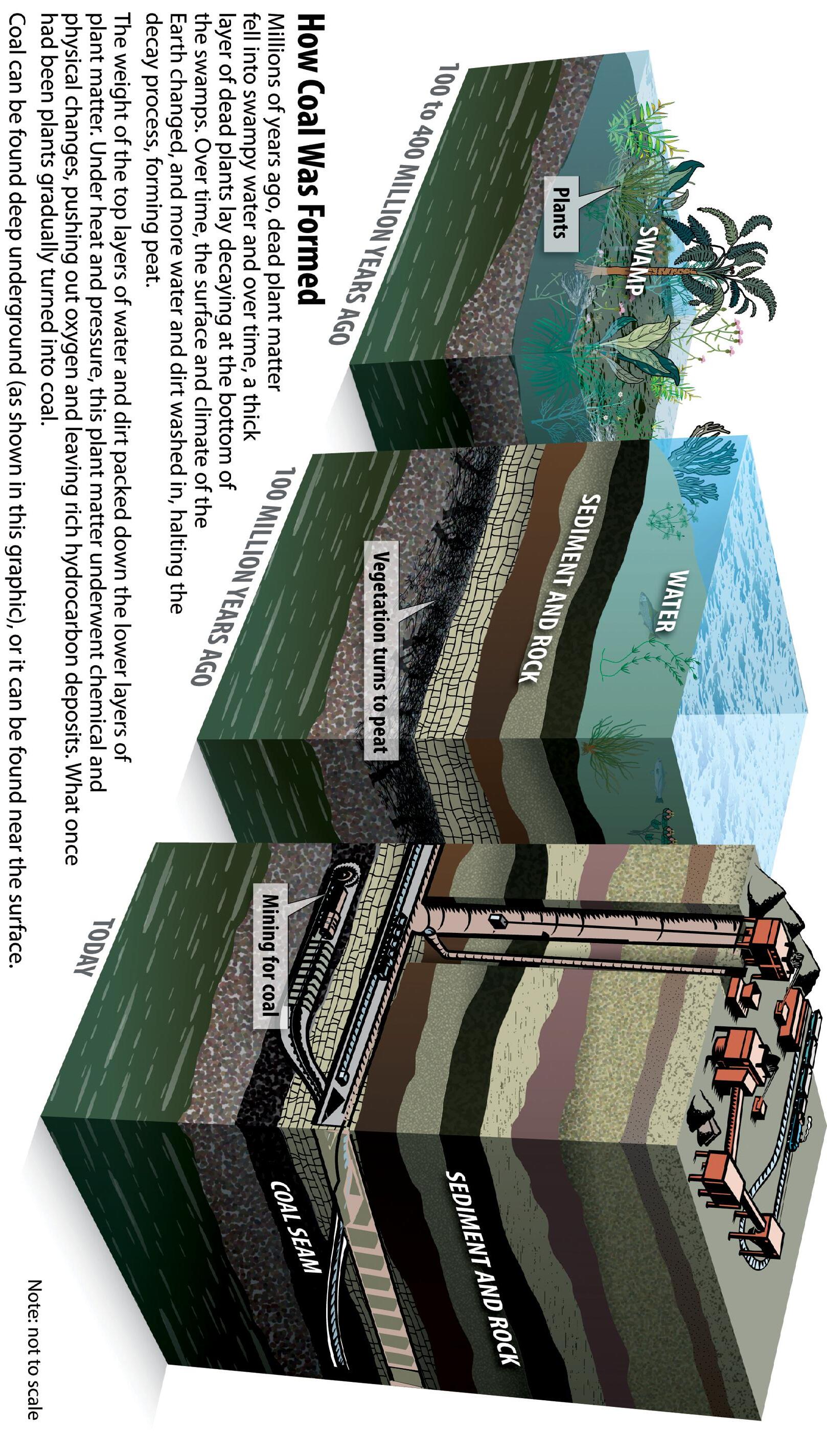
How Coal Was Formed
6. Electricity is sent to a switchyard, where a transformer increases the voltage, allowing it to travel through the electric grid.
5. Inside the generator, the shaft spins coils of copper wire inside a ring of magnets. This creates an electric eld, producing electricity.
4. The high pressure steam turns a turbine, which spins a shaft.
3. The steam travels at high pressure through a steam line.
2. Water is piped into the boiler and heated, turning it into steam.
1. A fossil fuel is fed into a boiler, where it is burned to release thermal energy.
Burning Fossil Fuels to Make Electricity
Burning Fossil Fuels to Generate Electricity
A Coal Story
Students will demonstrate the flow of energy to produce electricity using props. Depending on the audience, signs with the different forms of energy can be used by the students to identify the energy transformations. This activity can also be used to demonstrate other energy flows, like biodiesel, ethanol, natural gas, etc.
Sun
Nuclear fusion in the sun produces vast amounts of energy.
Prop & Action Yellow ball
Radiant Energy
Prop & Action
Chemical Energy
Nuclear energy in the sun is transformed to radiant energy and travels through space to Earth. Radiant energy travels in WAVES.
Long pieces of yellow ribbon, several students wave in the air
Radiant energy is absorbed by green plants and through photosynthesis converts radiant energy to chemical energy.
Prop & Action Green plants or silk plants, students bring up from floor
Stored Chemical Energy
Coal
Green plants die and are compressed under extreme pressure over a LONG period of TIME and become COAL. Chemical energy is stored in the coal.
Prop & Action Green plants or silk plants, students step on leaves
Coal is mined and taken to a power plant. (Additional details may be added if desired.)
Prop & Action Pieces of coal OR wads of black construction paper, students pick up coal from ground
Thermal Energy
Coal is burned in the furnace. Stored chemical energy produces thermal energy.
Prop & Action Empty box, coal is put into "furnace" box
Thermal Energy
Prop & Action
Steam
Prop & Action
Motion/Mechanical Energy
Prop & Action
Electrical Energy
Prop & Action
Electrical Energy
Prop & Action
Electrical Energy
The thermal energy heats the water. Water becomes steam.
Hot pot or bottled water, student lifts up hot pot
Steam travels down pipes (plastic tubing) to the turbine.
Plastic hose or tubing, connect tube to hot pot used above
Steam causes the turbine blades to spin.
Student arms, student stands with arms outstretched and bent upwards at the elbow, student spins as steam touches them
The turbine is connected to the generator causing the magnets to spin around the copper coils producing electrical energy.
Bar magnets, copper ribbons, three students hold bar magnets, one student is ‘wrapped’ in copper colored ribbon or wire, students with magnets ‘spin’ around copper wire
Electrical energy travels down the power lines to our homes.
Twisted rope, start with twisted rope then pull away the smaller pieces to designate the low voltage lines that come into our homes
Electrical energy powers our homes.
Prop & Action ‘Magic’ light bulb, and extension cord, student pulls chain on light bulb or switches it on
Variations
Other energy flows can be demonstrated, substituting other sources for the coal (corn to ethanol; soybeans to biodiesel; decomposing garbage to methane, etc.)
A Coal Story
A long, long time ago before even the dinosaurs roamed the Earth, the sun shone in the sky and giant plants grew in swampy forests. Like all living things, these plants died.
And more plants grew and died. This happened over and over for millions of years—plants grew and died and fell into the swamp.
The plants on the bottom got squished—really, really squished. After millions of years of being really squished those plants turned into COAL.
Now the coal is buried in the ground. Big machines—giant bulldozers and steam shovels— dig it up.
The machines load the coal onto trains and barges to take it to the power plant.
Inside the power plant there is a giant tub of water with a big furnance in the middle. The coal is put into the big furnance and burned.
The smoke from the fire is cleaned with big scrubbers before it goes up the smokestack and into the air.
Inside the furnance it gets really hot. So hot, the water in the tub boils and turns into steam. The oven is called a boiler because it boils the water and turns it into steam.
That steam comes roaring through a big pipe and turns a giant machine, called a turbine.
The turbine is attached to a generator that has coils of wire and big magnets. When the magnets spin around the wire, it makes electricity. That is amazing!
Now, we can’t go down to the power plant to buy a bag of electricity. So, the electricity comes to us.
Wires run out of the power plant and up a tall, tall pole. The electricity flows up the wire to the top of the pole. It flows through high-power lines from pole to pole until it gets to our town.
Then it flows into lots of small wires to our houses. Inside our houses—hidden in the walls— are lots of wires. They go to all the switches and all the outlets all over our house and the electricity flows through them.
When we flip on a light switch, the electricity flows into the light bulb and makes light. When we plug a phone into an outlet, it is charged. The electricity flows through the cord to make it work. Electricity runs our washers and dryers, TVs, and video games.
Lots of the electricity in our country is made by burning coal. The energy in the coal came from the sun.

Part One: Spheres
? Questions
Station One Guide
POTENTIAL AND KINETIC ENERGY
What forms of energy are demonstrated when you bounce a ball?
What energy transformation(s) occur?
Hypothesis
Read the questions above and the procedure below. Write a hypothesis to address the questions. Identify the variables to help you write the hypothesis.
Independent Variable(s)______________________________________________________________________
Dependent Variable(s)_______________________________________________________________________
Constants_________________________________________________________________________________
Materials
Measuring tape or meter stick
1 Set of happy/sad spheres
Hard surface (to drop spheres on)
Superball Safety glasses
Procedure
1. Drop the superball onto a hard surface from a height of one meter.
A Vocabulary
absorb
collision
gravitational potential energy
kinetic energy
potential energy
2. Record how high the superball rebounds and any other observations.
3. Repeat steps 1-2 two more times for a total of three trials and calculate the average.
4. Drop one black sphere onto a hard surface from a height of one meter.
5. Record how high the sphere rebounds and any other observations.
rebound
thermal energy
6. Repeat steps 4-5 two more times for a total of three trials and calculate the average. Place the sphere aside on a piece of scrap paper labeled "sphere 1."
7. Drop the second black sphere onto the hard surface, also from a height of one meter.
8. Record how high the sphere rebounds and any other observations.
9. Repeat steps 7-8 for a total of three trials and calculate the average. Place the sphere aside on a piece of scrap paper labeled "sphere 2."
Data
Table 1

Station One Guide | POTENTIAL AND KINETIC ENERGY
Part Two: Spheres in Hot Water
? Question
How does a change in temperature affect the energy transformations in bouncing spheres?
Hypothesis
Read the question above and the procedure below. Write a hypothesis to address the question. Identify the variables to help you write the hypothesis.
Independent Variable(s)______________________________________________________________________
Dependent Variable(s)_______________________________________________________________________
Constants________________________________________________________________________________
Materials A Vocabulary
Measuring tape or meter stick
1 Set of happy/sad spheres
Hard surface (to drop spheres on)
Superball
Procedure
Safety glasses Tongs
Cup of hot water
absorb collision
gravitational potential energy
kinetic energy
potential energy rebound thermal energy
1. Place the superball into the cup of hot water and let it sit in the hot water for two minutes.
2. Using the tongs, remove the superball and place sphere 1 into the cup of hot water.
3. Drop the superball onto a hard surface from a height of one meter, and record the results. Repeat for a total of three trials.
4. Set the superball aside and remove sphere 1 from the hot water using the tongs. Put sphere 2 into the hot water.
5. Drop sphere 1 onto the hard surface from a height of one meter, and record the results. Repeat for a total of three trials.
6. Set sphere 1 aside and remove sphere 2 from the hot water using the tongs.
7. Drop sphere 2 onto the hard surface from a height of one meter, and record the results. Repeat for a total of three trials.
Data
2
Part One and Two Conclusions
What forms of energy were demonstrated and what transformations occurred? Was there a change in results after the spheres had been placed in hot water? How was energy transferred when hot water entered the system? Explain what happened and why you think it happened using data to support your reasoning. What real world applications can you think of where energy transfers occur in the same manner?

Station One Guide | POTENTIAL AND KINETIC ENERGY
Part Three: Toys
! Caution
This activity uses a balloon made of latex. If you have a latex allergy you should not handle the balloon. Only one person per group should blow up the balloon to avoid spreading germs.
? Questions
What forms of energy are demonstrated?
What energy transformations occur in each toy?
Hypothesis
Read the questions above and the procedure below. Write a hypothesis to address the question. How do you think each toy transforms energy?
Materials
Toy car
Balloon (see Caution above)
Yo-yo
Safety glasses
A Vocabulary
compress
contract
elastic energy
friction
kinetic energy
Law of Conservation of Energy
motion energy
potential energy
transformation
Procedure
1. Investigate each toy. Make each toy move over some distance and observe the movement closely.
2. Record the energy transformation that you observe in each of the three toys.
Data
TOY
Part Three Conclusion
Describe the forms of energy you observed and what transformations occurred?
Station One Conclusions
ENERGY TRANSFORMATION
Read the Station One: What Was Happening? article. Using your conclusions from each part of this station, summarize the energy transformations you observed. How do your findings compare to the explanations in the Station One: What Was Happening? article? Cite specific textual evidence in your summary.
? Questions for Further Investigation
When might you use the information you learned from this station?
What new questions do you have? Brainstorm new investigation questions for this station.

Spheres
Station One: What Was Happening?
POTENTIAL AND KINETIC ENERGY
When an object is moving, it has kinetic energy. When an object is still, but is in a position so that gravity can move it, it has gravitational potential energy (GPE). A rock at the top of a hill has potential energy. As it rolls down the hill, the GPE turns into kinetic energy—the energy of motion.
A collision occurs when a moving object hits another object. When you push a sphere, your hand gives it kinetic energy. The faster it goes, the more kinetic energy it has. When the sphere runs into your other hand, there is a collision. If it stops completely, it loses all its kinetic energy. The Law of Conservation of Energy says that energy is neither created or destroyed. The energy cannot just disappear. Where does it go?
The kinetic energy is converted into other kinds of energy – like sound and heat. Usually, when there is a collision, an object doesn’t stop completely. It rebounds. This means it has not lost all of its kinetic energy. The sphere will continue bouncing until it no longer has any kinetic energy.
When you held the sphere above the table you gave it GPE. If you drop the sphere, you know it will fall because of the force of gravity. This energy of position is its GPE. One of the black spheres you dropped bounced back about 65 centimeters (cm); this is the "happy sphere." That means it kept about 65 percent of its energy. Where did the rest of the energy go? When the sphere hit the table, could you hear the collision? Part of the energy was changed into sound. Part of the energy was also changed into heat, or thermal energy. The sphere and the table are both getting hotter every time you drop the sphere, even though you cannot really feel the difference.
The other sphere you tested also had the same amount of GPE at the beginning, but it hardly bounced; this is the sad sphere. What happened?
This "sad sphere" is not broken. It is made of a different kind of rubber than the "happy sphere". (The happy sphere is neoprene rubber and the sad sphere is polynorbornene rubber.) Almost all of the kinetic energy changes into other forms of energy. Most of the sphere's kinetic energy changes into sound and heat. Feel both of the spheres. Do they feel different? Does the happy sphere seem harder than the sad sphere? The sad sphere is softer, so its shape can change more easily and it can absorb more energy in a collision than a happy sphere. How does the superball compare?
When you put the sad sphere into hot water the sphere absorbed thermal energy from the hot water. The sad sphere bounced higher than when it was cool. Since the sphere has absorbed thermal energy from the water, it cannot absorb much more thermal energy from the collision. The sphere retains more of its kinetic energy and bounces higher. As the sphere cools down, it loses its thermal energy and more of the GPE can be changed into heat when it hits the table. The cooler it is before dropping, the less it bounces. These experiments show us how potential energy is changed into motion and how motion is changed into sound and heat.
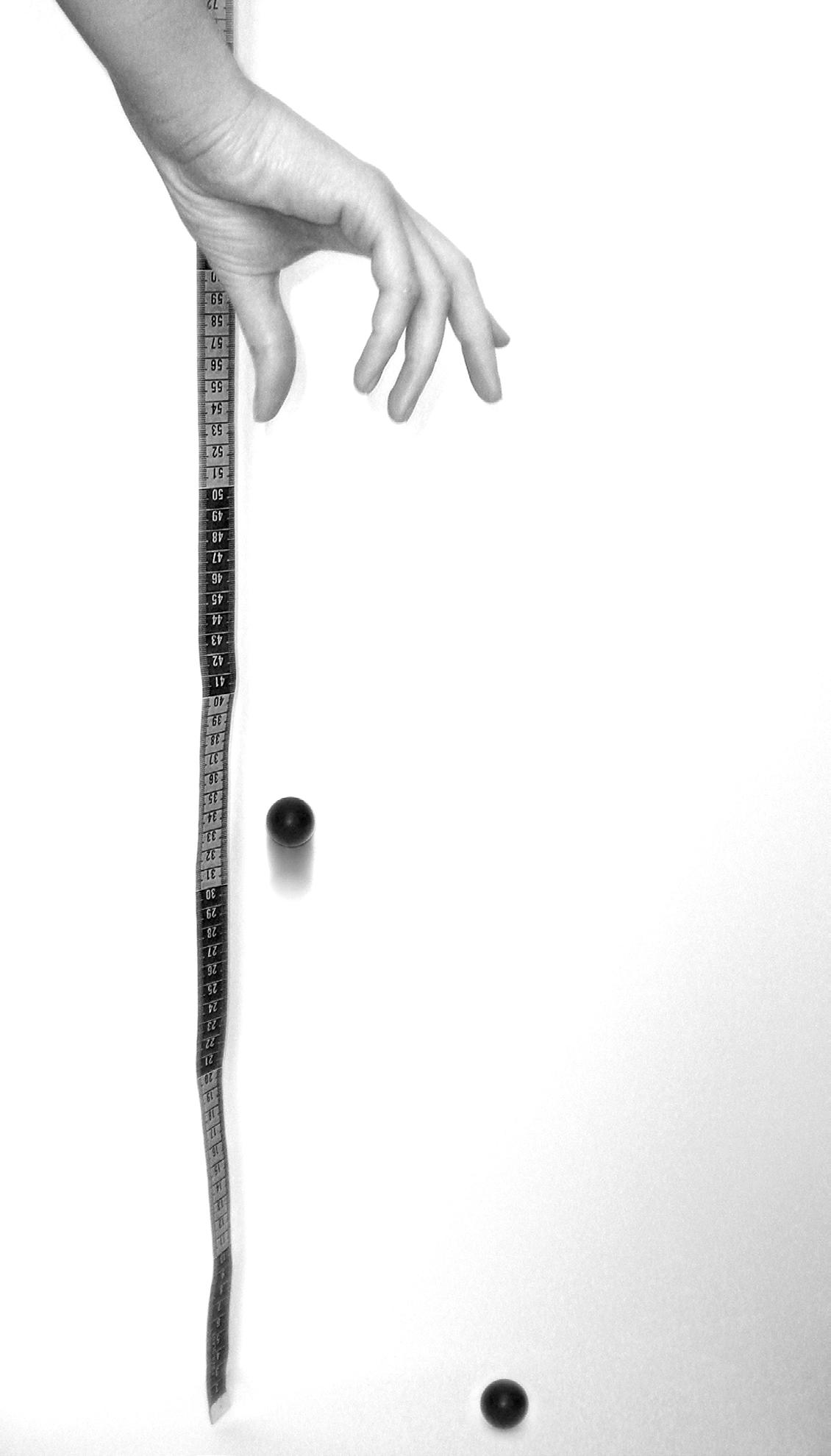
Toys
Toy Car
As demonstrated with the spheres, holding an object in the air gives it potential energy; however, this is not the only way you can store potential energy. The car has a spring in it. When you push down on the car and pull it backward, you transfer your kinetic energy by compressing the spring. Your kinetic energy is now stored in the form of elastic energy. When the car is released, the car starts to move. The elastic energy in the spring changes to motion. Why does the car eventually stop? The car stops because of friction. Friction changes some of the motion into thermal energy and sound.
Balloon
When you blow up a balloon, you are using your kinetic energy to stretch the rubber, storing it as elastic energy. Just as you used your energy to compress the spring in the car, energy is stored in stretched rubber and compressed air. Where did the energy go when you let go of the balloon? The elastic energy was converted into motion, thermal, and sound energy. The balloon moves in a specific direction when you let go of it. The air in the balloon comes out of the opening. Due to Newton's Third Law of Motion, the balloon will move in the exact opposite direction from the air forced out.
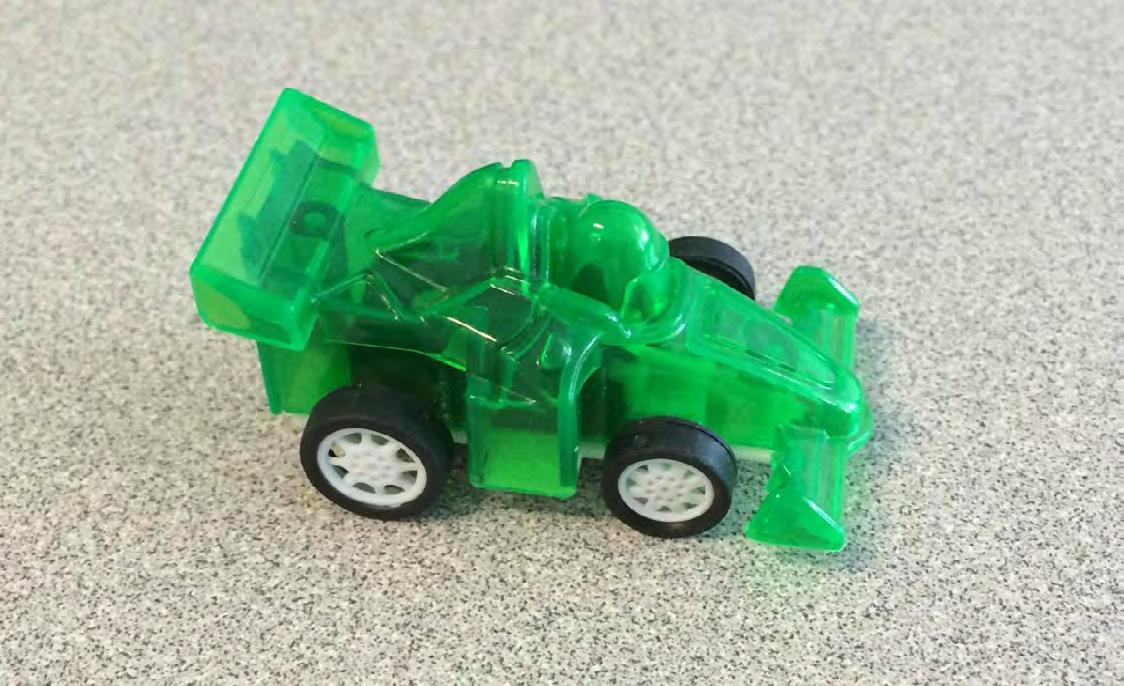
Yo-yo
When you let go of the yo-yo, how far back up the string did it come? The yo-yo only came a little over half way. Why did it not come back to your hand? Friction between the string and the yo-yo changed some of the motion energy into thermal energy.
Where is the energy stored that makes the yo-yo come back up after you let it go? The energy is stored in the yo-yo. Potential energy can be stored in many spinning objects, which sometimes are called flywheels.
These demonstrations have explored potential and kinetic energy, and how we can change energy from one form to another.
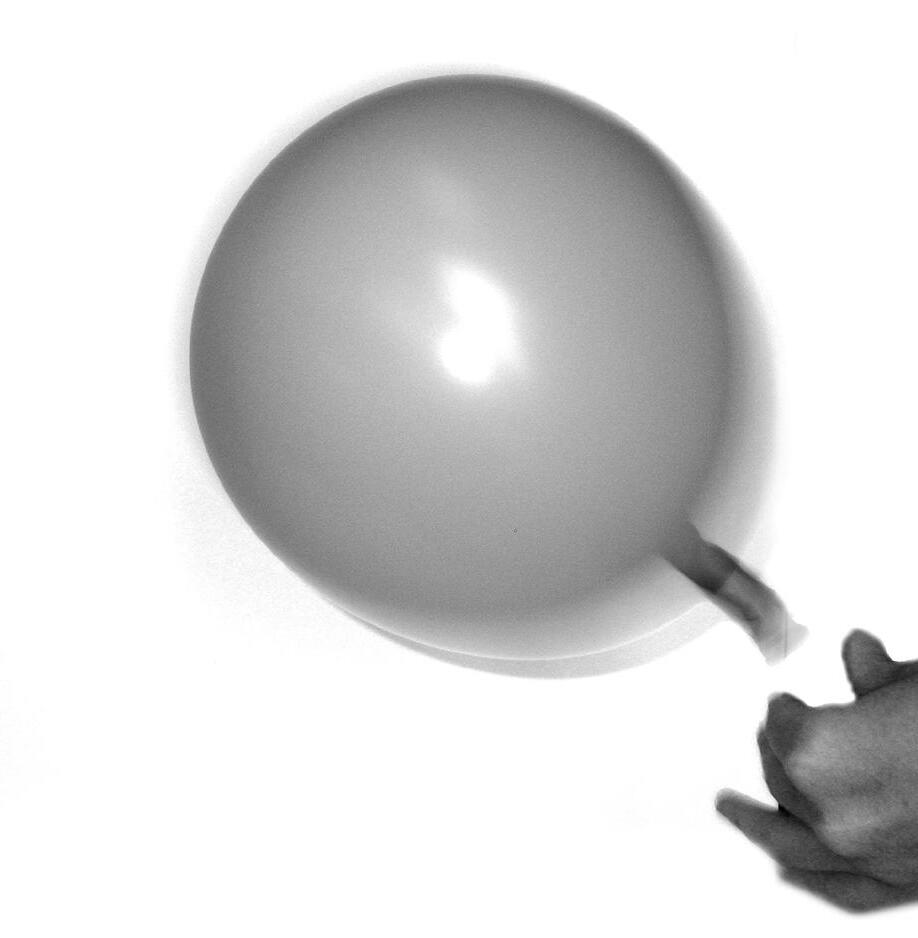






Station Two Guide
ENDOTHERMIC
AND EXOTHERMIC PROCESSES
Part One: Baking Soda and Vinegar
? Questions
How is the temperature of vinegar affected when it is combined with baking soda?
What energy transformation(s) occur?
Materials
Baking soda
Safety glasses
Measuring cups
Plastic bags
Thermometer
Vinegar
Procedure
A Vocabulary
absorb
chemical energy
chemical reaction
endothermic
exothermic
thermal energy
Note: Milliliter (mL) is a liquid measurement and cubic centimeter (cm3) is a dry measurement. 1 mL = 1 cm3
1. Pour 10 mL of vinegar into an empty plastic bag.
2. Feel the bag. Observe and record how the temperature feels.
3. Place the thermometer in the bag. Make sure the bulb of the thermometer is submerged in the vinegar. Record the temperature of the vinegar. Leave the thermometer in the bag.
4. Carefully pour 10 cm3 of baking soda into the bag and gently mix. (Be careful, the chemical reaction will cause foam to fill the bag.)
5. Wait 30 seconds and record the temperature again.
6. Remove the thermometer from the bag and carefully zip the bag.
7. Feel the bag again and note how the temperature change feels. Record observations.
Data
DATA TABLE TEMPERATURE
VINEGAR
VINEGAR AND BAKING SODA
Part One Conclusion
OBSERVATIONS
How was the temperature of the vinegar affected when combined with baking soda? What forms of energy were demonstrated and what transformations occured? Use appropriate vocabulary in your answer.

Station Two Guide | ENDOTHERMIC AND EXOTHERMIC PROCESSES
Part Two: Calcium Chloride and Water
? Questions
How is the temperature of water affected when combined with calcium chloride?
What energy transformation(s) occur?
Materials
Calcium chloride
Measuring cup
Safety glasses
Plastic bags
Thermometer
Water
Procedure
A Vocabulary
chemical energy
chemical reaction
endothermic
exothermic
release
thermal energy
Note: Milliliter (mL) is a liquid measurement and cubic centimeter (cm3) is a dry measurement. 1 mL = 1 cm3
1. Pour 10 mL of water into an empty plastic bag. Feel the bag. Observe and record how the temperature feels.
2. Place the thermometer in the bag. Make sure the bulb of the thermometer is submerged in the water. Record the temperature of the water. Leave the thermometer in the bag.
3. Carefully pour 4 cm3 of calcium chloride into the water and gently mix.
4. Wait 30 seconds and record the temperature again.
5. Remove the thermometer from the bag and carefully zip the bag.
6. Feel the bag again and note how the temperature change feels. Record your observations.
Data
Part Two Conclusion
How was the temperature of the water affected when combined with calcium chloride? What forms of energy were demonstrated and what transformations ocurred. Use appropriate vocabulary in your answer.

Station Two Guide | ENDOTHERMIC AND EXOTHERMIC PROCESSES
Part Three: Hand Warmers
? Questions
How is powdered iron affected when exposed to oxygen?
What energy transformation(s) occur?
Materials
Safety glasses
Hand warmer (iron filings)
Plastic bags
Scissors
Thermometer
Sealed plastic bag of iron oxide (old packet)
Procedure
A Vocabulary
chemical energy
chemical reaction
endothermic
exothermic
iron oxide
release
thermal energy
1. Remove a hand warmer from the plastic wrap. Cut open the cloth hand warmer packet.
2. Pour the contents of the hand warmer into an empty plastic bag. This will be called the "new packet.” Record the temperature of this new packet immediately, and leave the bag open for three minutes.
3. Observe the sealed bag of old powdered iron. This will be called the "old packet". Touch the bag and observe how the temperature feels. Put a thermometer in the bag and record the temperature and observations about the old packet.
4. After 3 minutes, feel the new packet and note how the temperature feels. Put a thermometer in the bag and record the temperature. Record your observations. Record the temperature and your observations about the old packet.
5. Seal both the old packet and the new packet to prevent oxygen from entering the bags and set aside.
6. After three minutes, feel and measure the temperature of the new packet and old packet. Are there any changes to the temperatures? Record your observations.
*Do not discard the old packet. You will use this packet during the presentations.
Data TEMPERATURE
INITIAL AFTER 3 MINUTES 3 MINUTES AFTER SEALING
OBSERVATIONS
Part Three Conclusion
Explain what happens to iron when it is exposed to oxygen. Use vocabulary to explain your answer and describe what energy transformations took place.
Station Two Conclusions
Read the Station Two: What Was Happening? article. Using your conclusions from each part of this station, summarize the energy transformations you observed. How do your findings compare to the explanations in the Station Two: What Was Happening? article? Cite specific textual evidence in your summary.
? Questions for Further Investigation
When might you use the information you learned from this station?
What new questions do you have? Brainstorm new investigation questions for this station.





Baking Soda and Vinegar
Station Two: What Was Happening?
ENDOTHERMIC AND EXOTHERMIC PROCESSES
Many of the items we use every day can be classified as chemicals. Chemicals undergo changes regularly. We call these changes chemical processes. Some chemical processes are chemical reactions and some are not. Chemical reactions occur when you mix two chemicals together to form one or more new chemicals. All chemical processes involve thermal energy. Some release heat and some absorb heat.
An endothermic process absorbs heat. Endo- means in and thermal means heat. Endothermic—the thermal energy goes in. An exothermic process releases heat. Exo- means out and thermal means heat. Exothermic—the thermal energy goes out. In Station Two you saw both types of processes.
Mixing baking soda and vinegar is an endothermic process—it absorbed thermal energy. Combining vinegar and baking soda together made other chemicals: water, carbon dioxide, and sodium acetate. Therefore, it is a chemical reaction.
When you added baking soda to the vinegar you were able to visually see a reaction taking place. The temperature of the liquid also dropped, which you could tell by feeling the bag, and from your thermometer reading.
Thermal energy always moves from a warmer object to a colder object. You can feel the thermal energy move away from your hand into the chemical reaction of baking soda and vinegar.
The mixture felt colder because the reaction absorbed thermal energy. It was an endothermic reaction. The thermal energy that was in each substance individually was stored in the bonds of the new chemical that was formed. The reaction took thermal energy from the mixture and transformed it into stored chemical energy. Most spontaneous chemical reactions do not absorb thermal energy like the vinegar and baking soda. Most chemical reactions release thermal energy—they are exothermic. The second and third part of Station Two were examples of exothermic processes.
Calcium Chloride and Water
When calcium chloride came into contact with water, it dissolved into a solution. In this investigation you witnessed an exothermic process. Even though dissolving CaCl2 is a physical change and not a chemical change, it still releases thermal energy. You observed the temperature increase on the thermometer and could feel the difference, which also let you know thermal energy was being released.
A common use for calcium chloride is driveway ice melt. You can buy driveway ice melt at your local hardware store to melt the ice on your driveway and sidewalks during the winter.
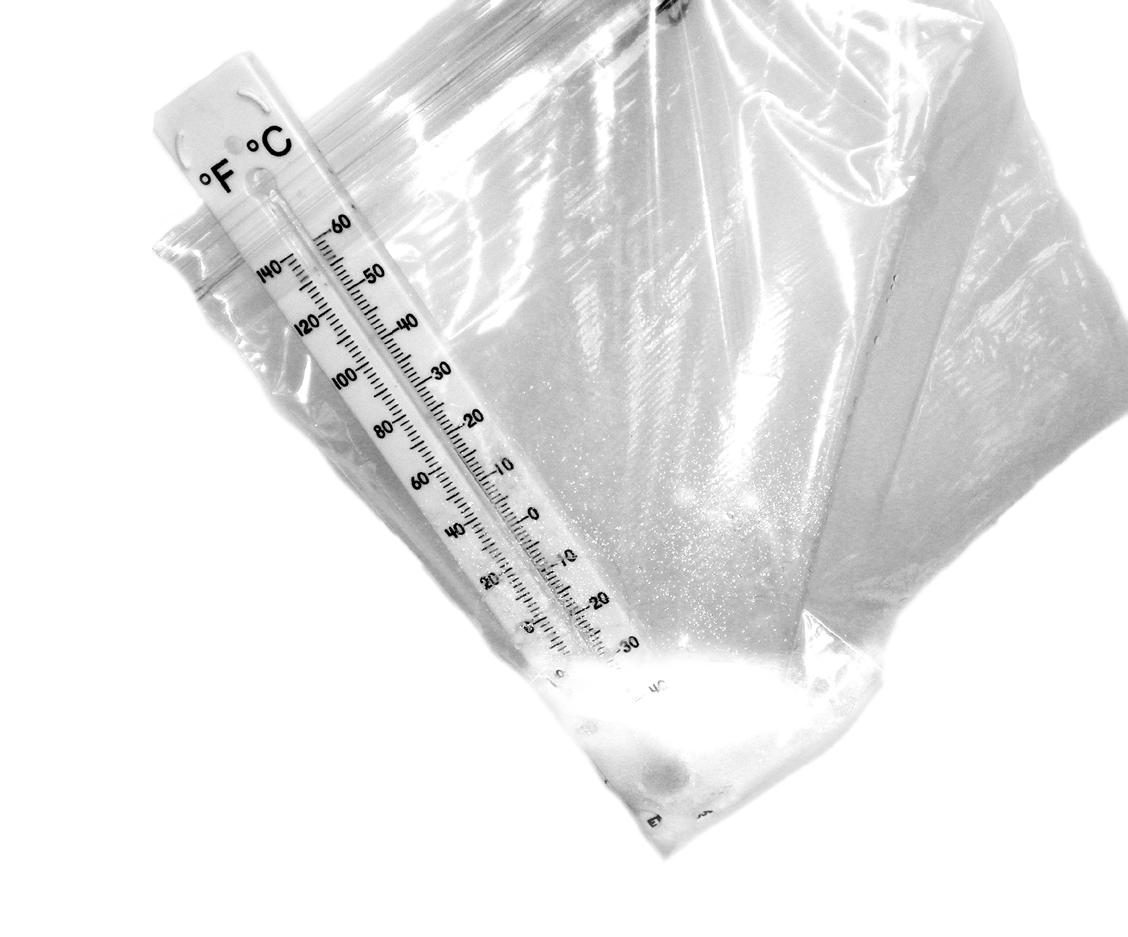
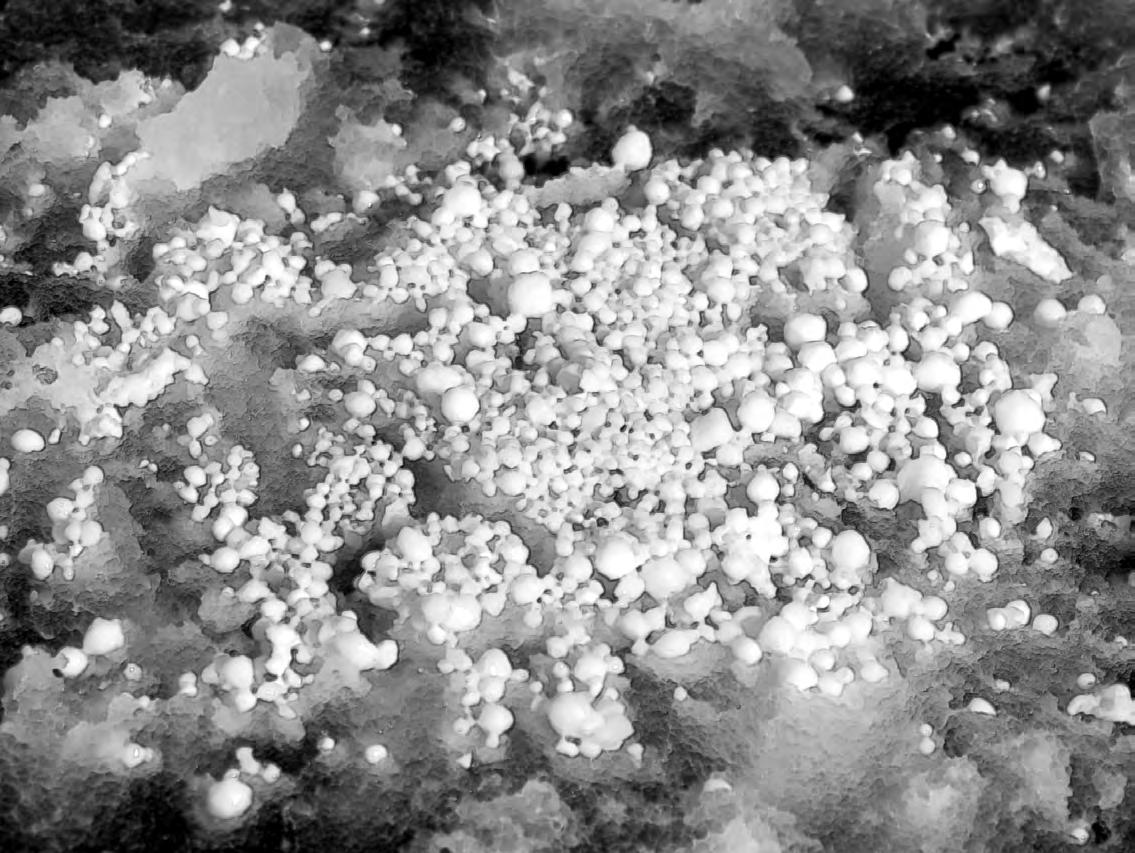
Hand Warmers
Hand warmers are filled with a mixture that includes powdered iron. They are sealed in plastic to keep air from reaching the iron. The old packet had been open for several weeks. When the iron filings were left in an open plastic bag, oxygen and water vapor in the air were able to come in contact with the surface area of the filings. The oxygen and water in the air reacted with the iron to form a new chemical, iron oxide, or rust. As you could see, all the iron had turned to rust. No more heat was being produced in the chemical process.
The new packet you opened felt warm. When oxygen came into contact with iron in the presence of water vapor, it made rust and heat. You could see that most of the iron filings were still black. They slowly turned to rust as long as we let oxygen reach them. When you sealed the bag, oxygen was not allowed to reach the iron filings. The reaction should have slowed down and stopped.
Why do you think the hand warmer has a lot of powdered iron instead of one large piece of iron? Using powdered iron in place of larger pieces increases the surface area of exposed iron, allowing more oxygen to come in contact with it, which gives off more thermal energy. It speeds up the reaction because of the increase in surface area. Large pieces of iron react more slowly and release heat more slowly.
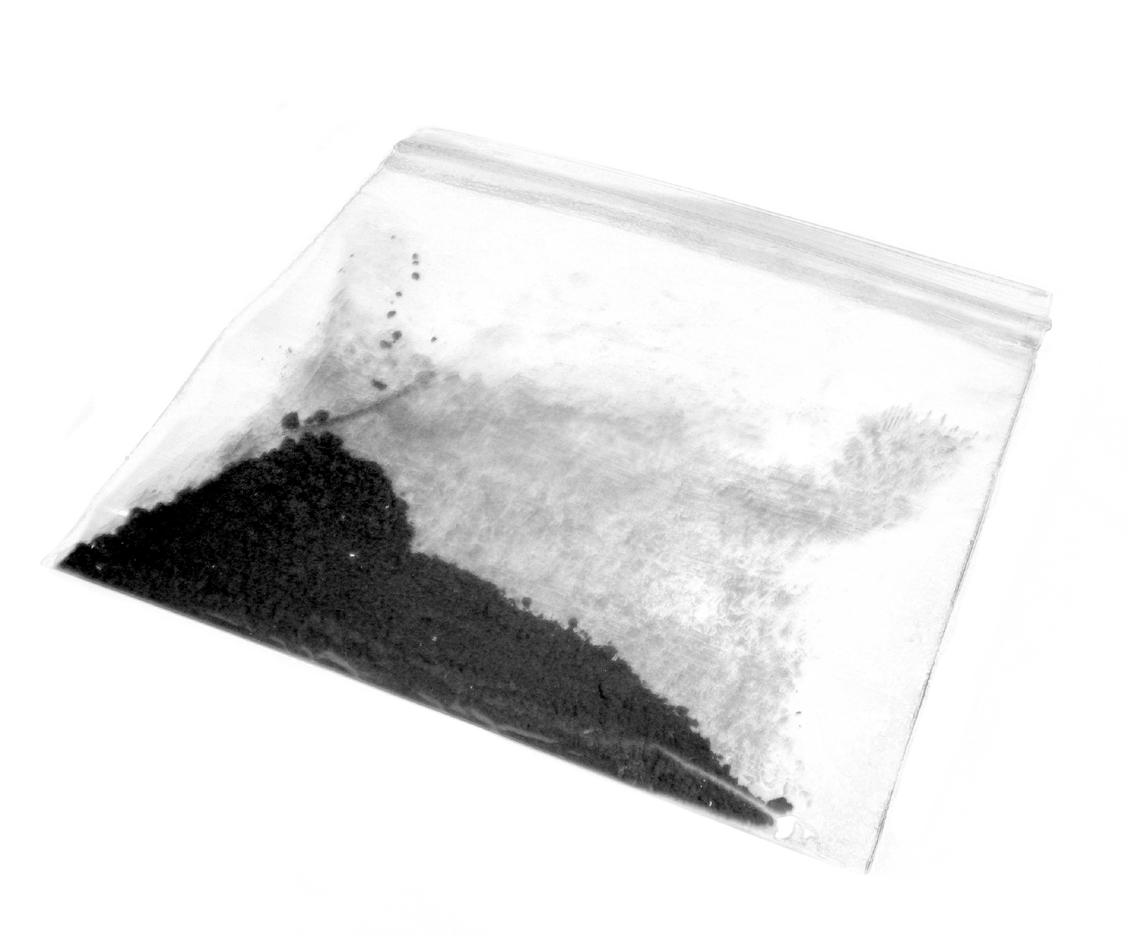
Station Three Guide
Part One: Sunlight and Shade
! Caution
Keep the thermometers 15–30 centimeters away from the light source to avoid melting the plastic.
? Questions
How does direct light affect the temperature of an object?
What energy transformation(s) occur?
Hypothesis
Read the questions above and the procedure below. Write a hypothesis to address the questions. Identify the variables to help you write the hypothesis.
Independent Variable(s)______________________________________________________________________
Dependent Variable(s)_______________________________________________________________________
Constants_________________________________________________________________________________
Materials
2 Thermometers
Sunlight (or other light source that uses an incandescent bulb)
Safety glasses
Procedure
A Vocabulary
absorb
radiant energy
thermal energy
1. Place one thermometer in direct sunlight or 15-30 cm from a light source.
2. Place a second thermometer in the shade or out of direct light.
3. Record the starting temperature of each thermometer.
4. Record the temperature of each thermometer every five minutes. Continue working on the other parts of Station Three while time passes.
5. Graph your data in a double line graph.
Data
THERMOMETER IN SUN OR DIRECT LIGHT
THERMOMETER IN THE SHADE OR OUT OF DIRECT LIGHT
Part One Conclusion
Explain how direct sunlight affects the temperature of an object. What energy transformation(s) occurred? Cite the evidence to support your reasoning.
Station Three Guide | RADIANT ENERGY TRANSFORMATIONS
Part Two: Radiometer
? Questions
How does light affect a radiometer?
What energy transformation(s) occur?
Materials
Radiometer
Light source (bright sunlight, clamp light, flashlight, sun, etc.)
Ruler
Safety glasses
Procedure
A Vocabulary
absorb
expand
molecule
motion energy
radiant energy
thermal energy
vacuum
1. Observe the radiometer. Draw a diagram of the radiometer, labeling the black and white sides of the vanes.
2. Place the radiometer in a bright light. Observe the direction that the vanes move. Add arrows to your diagram to show the direction of vane movement.
3. Vary the amount of light the radiometer receives by moving the radiometer. Record how you changed the light and how the radiometer responded in the table below.
4. Find ways to partially and completely shield the radiometer from the light. Record your observations in the table.
Data
AMOUNT OF LIGHT
RADIOMETER OBSERVATIONS
Part Two Conclusion
Explain how light affects a radiometer. Explain the energy transformation(s) that occurred.
Station Three Guide | RADIANT ENERGY TRANSFORMATIONS
Part Three: Solar Panel
? Questions
How does the angle of the light affect the amount of electricity produced by a solar panel?
What energy transformation(s) occur?
Hypothesis
Read the questions above and the procedure below. Write a hypothesis to address the questions. Identify the variables to help you write the hypothesis.
Independent Variable(s)______________________________________________________________________
Dependent Variable(s)_______________________________________________________________________
Constants_________________________________________________________________________________
Materials
Solar panel with motor, fan, and disks
Artificial light source
Protractor
Ruler
C Battery
Safety glasses
Solar Panel Assembly and Connection Instructions
1. Attach the wires from the motor to the connectors on the back of the PV cell by removing the nuts from the connectors, sliding the motor wires onto the posts and replacing and tightening the nuts as shown in Diagram 1.
2. Attach the fan to the post on the opposite end of the motor.
3. If nothing happens, remove the motor leads from the solar panel and touch them to the ends of a C battery to “jumpstart” the motor, then try again.*
*NOTE: You may need to hold the panel very close to the lamp if working with a halogen incandescent bulb. Use caution and check to be sure the plastic is not melting.
Procedure
A Vocabulary
absorb
electrical energy
motion energy
photovoltaic cell
radiant energy
silicon
Back of PV Cell connectors Motor with wires
Fan +



1. Set up the light source, PV cell, and protractor as shown in Diagram 2. The PV cell is placed in a position vertical to the table.
2. Record in the table how the fan blades are moving.
3. Tilt the PV cell back in 15 degree increments away from vertical. Record observations in the table below.
Data
2
Station Three Guide | RADIANT ENERGY TRANSFORMATIONS
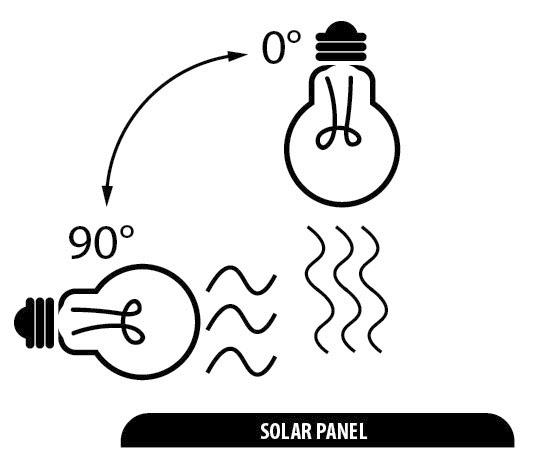
Part Three Conclusion
Explain how changing the angle of the solar panel affected electricity production. Describe the energy transformation(s). Use evidence from your observations to support your conclusions.
Station Three Conclusions
Read the Station Three: What Was Happening? article. Using your conclusions from each part of this station, summarize the energy transformations you observed. How do your findings compare to the explanations in the Station Three: What Was Happening? article? Cite specific textual evidence in your summary.
? Questions for Further Investigation
When might you use the information you learned from this station?
What new questions do you have? Brainstorm new investigation questions for this station.
Station Three: What Was Happening?
Sunlight and Shade: Radiant Energy into Heat
You may have heard the expression, “It was 100 degrees cooler in the shade.” Why do people say that? Even when the air temperature is the same, it feels hotter when you are in the sun than when you are in the shade. When you are in the sun, the sun’s radiant energy is absorbed by your body and turned into thermal energy, making you feel hotter. In the shade, you only feel the thermal energy from the air molecules striking your body.
The thermometer facing the light has a higher temperature because the sun’s radiant energy is being transformed into thermal energy.
Radiometer: Radiant Energy into Motion
Did you realize that light can make things move? In the radiometer investigation, you saw light change into heat, then into motion— radiant energy into thermal energy into motion. The radiometer has very little air inside the bulb; it is almost a vacuum. The black and white vanes are balancing on a needle. There is nothing else inside the bulb.
When you put the radiometer in the light, the vanes begin to turn. How is the light making the vanes turn? Black objects get hotter than white objects in the sun. That is why people wear light colored clothes in the summer. A black object absorbs most of the radiant energy that strikes it and reflects only a little. A white object reflects most of the radiant energy that strikes it and absorbs only a little.
When you put the radiometer in the light, the vanes absorb sunlight. The radiant energy is changed into thermal energy. The black side of the vane is absorbing more energy than the white side. When the air molecules hit the black side, they bounce back with more energy than when they hit the white side. The brighter the light, the faster the vanes turn. If both sides of the vanes were the same color, the vanes would never move because the air molecules would be bouncing off the vanes with the same amount of force.
To the right is a picture of the radiometer from the top. When the air molecules hit the white sides of the vanes, they push a little. The air molecules nearer to the black sides of the vanes get warmer. When air molecules heat up, they move faster. They will push harder than the air molecules on the white sides of the vanes. Since there is more of a push on one side than the other, the vanes begin to turn. The more radiant energy that reaches the radiometer, the more thermal energy is produced, and the faster the vanes spin. Radiant energy is changed into thermal energy, which causes motion.

Top View of Radiometer
Solar Panel: Radiant Energy into Electricity
You have probably seen solar calculators or solar toys that use light to produce electricity. In this investigation you saw radiant energy converted into electrical energy, then into motion energy.
A solar panel is made of lots of photovoltaic cells, or PV cells, connected together. Photo means light and volt is a measure of electricity. PV cells are made of silicon, the same substance that is in sand. When light strikes PV cells, the electrons in the cells move, producing an electric current. It happens instantly and silently. There are no moving parts to wear out.
The motor converts electrical energy into a spinning motion, which you saw with the fan. The amount of electrical energy depends on the number of cells in the panel.
When you changed the angle of the panel toward the light, you also changed how much electricity was produced. This changed the speed of the fan. More electricity is produced if the light is shining directly on the PV cells, because more radiant energy is striking the cells.
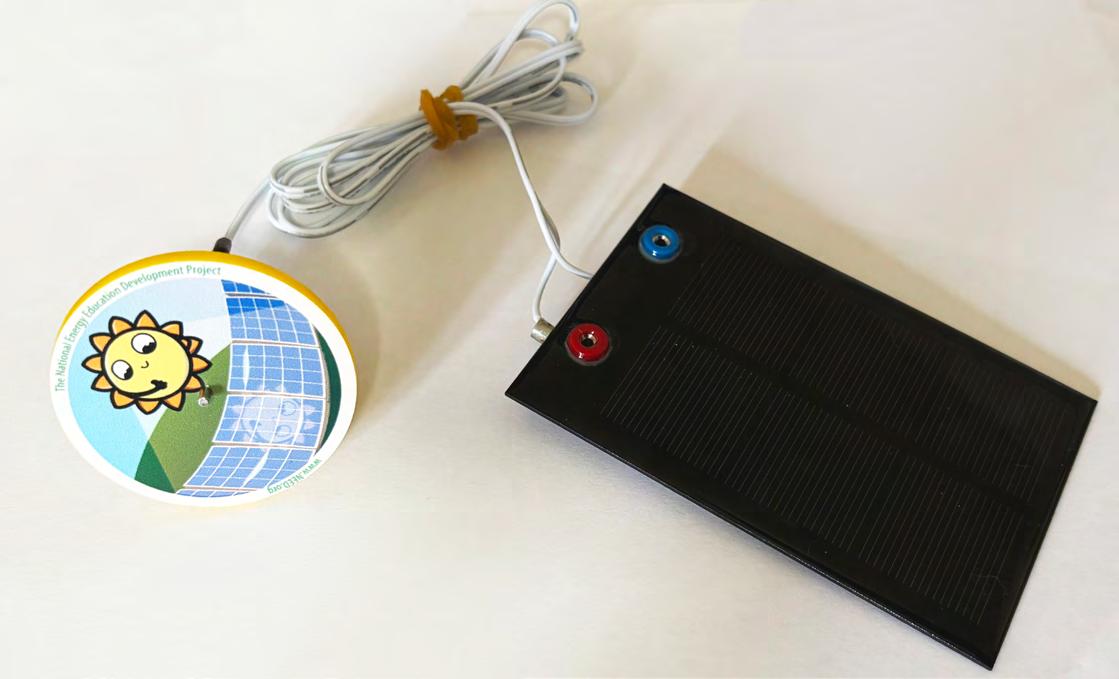
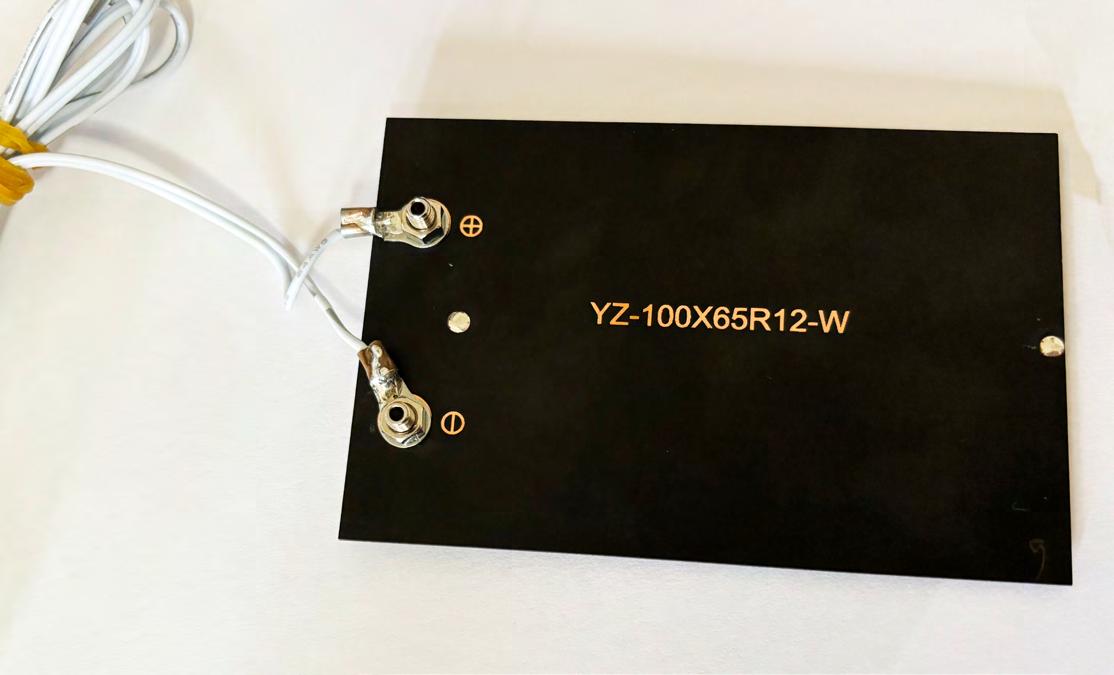

Part One: The Hanger
? Questions
Station Four Guide
THERMAL ENERGY AND MOTION ENERGY
How does bending the hanger affect its temperature?
What energy transformation(s) occur?
Materials
Piece of thin metal hanger
Safety glasses
Procedure
1. Feel and note the temperature of the metal hanger.
2. Bend the metal back and forth 5 times at the center.
A Vocabulary
friction
molecule
motion energy
thermal energy
3. Feel the metal with your finger. What do you notice? Record your observations.
Part One Conclusion
Explain how bending the hanger affects the temperature of the metal. What energy transformation(s) occurred?
Part Two: The Rubber Band
! Caution
Safety glasses should be worn for this exploration.
Rubber bands can be made from latex. If you have a latex allergy, do not handle the rubber bands.
? Questions
How does stretching and releasing the rubber band affect its temperature?
What energy transformation(s) occur?
Materials
1 Large rubber band
Safety glasses
Procedure
A Vocabulary
contract
expand
thermal energy
1. Hold the rubber band firmly with your index fingers inside the ends of the rubber band and your thumbs on the outside.
2. Place the rubber band flat on your forehead. Quickly stretch the rubber band to twice its original length. Pause, and keep the stretched rubber band touching your forehead. Allow it to contract. What do you notice? Repeat this trial three times and record your observations.
Part Two Conclusion
Explain how stretching and releasing the rubber band affected its temperature. What energy transformation(s) occurred?
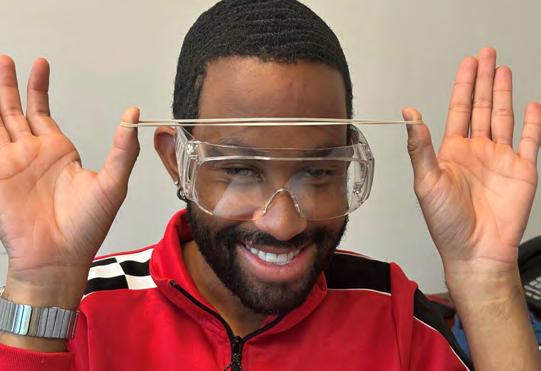

Station Four Guide | THERMAL ENERGY
AND MOTION ENERGY
Part Three: The Live Wire
! Caution
Handle the hot water very carefully. Always use the tongs when placing the live wire into or removing the live wire from the hot water. Do not look directly over the cup. NEVER place the live wire into a flame.
? Questions
How does temperature affect the live wire?
What energy transformation(s) occur?
Hypothesis
Read the questions above and the procedure below. Write a hypothesis to address the questions. Identify the variables to help you write the hypothesis.
Independent Variable(s)______________________________________________________________________
Dependent Variable(s)_______________________________________________________________________
Constants_________________________________________________________________________________
Materials
Live wire
Cup of hot water
Cup of ice water
Cup of room temperature water
Tongs
Safety glasses
Thermometer
Procedure
A Vocabulary
absorb
thermal energy
1. Take the temperature of your ice, hot, and room temperature water. Record the temperatures in the data table.
2. Twist the wire into a shape, but do not tie it in a knot. Draw the shape of the live wire in the data table.
3. Using the tongs, CAREFULLY dip the live wire into the ice water, wait 30 seconds and remove it. Draw the shape of the live wire in the data table.
4. Repeat steps 1 and 2 for room temperature and hot water.
Data
Part Three Conclusion
Explain how temperature affected the live wire. Explain the energy transformation(s) that occured.

Station Four Guide | THERMAL ENERGY AND MOTION ENERGY
Part Four: The Bi-Metal Bar
! Caution
Follow safety procedures for using an open flame source.
? Questions
How does temperature affect the bi-metal bar?
What energy transformation(s) occur?
Materials
Bi-metal bar
Candle
Matches
Safety glasses
Cup of ice water
Procedure
FROM ABOVE Bimetal Bar
A Vocabulary
absorb
expand
contract
molecules
thermal energy
1. Compare diagram 1 of a bi-metal bar to the actual bi-metal bar. Record your observations.
2. Carefully hold the bi-metal bar sideways in the top of the candle flame so that both sides of the bar are in the flame.
3. Remove the bi-metal bar from the flame. DO NOT TOUCH THE BAR. Place the bi-metal bar into the cup of ice water for 30 seconds.
4. Record and illustrate your observations for steps 2 and 3.
Part Four Conclusion
Explain how temperature affected the bi-metal bar. Why did the bi-metal bar bend only in one direction? Explain the energy transformation(s) that occurred.
Station Four Conclusions
Read the Station Four: What Was Happening? article. Using your conclusions from each part of this station, summarize the energy transformations you observed. How do your findings compare to the explanations in the Station Four: What Was Happening? article? Cite specific textual evidence in your summary.
? Questions for Further Investigation
When might you use the information you learned from this station?
What new questions do you have? Brainstorm new investigation questions for this station.

Station Four: What Was Happening?
THERMAL ENERGY AND MOTION ENERGY
The Hanger
You used your own kinetic energy to bend a piece of the metal hanger a few times. What happened when you did this? When you bent the hanger, the molecules of the metal at the bend moved faster. The motion created friction, which in turn produced thermal energy. When you felt the hanger, you should have felt it was warmer than when you started.
You’ve probably converted motion into thermal energy lots of times on cold days. Try this. Put your hands on your face to note the warmth of your hands. Next, rub your hands together for about ten seconds and put them back on your face. They should feel warmer. You have just converted motion into thermal energy.
The Rubber Band
This experiment demonstrated an energy transformation that both released and absorbed energy.
When you quickly stretched the rubber band to twice its length and placed it against your forehead, or when you let it contract, did you feel a change in temperature? The rubber band should have felt warm when it was stretched and cool when it contracted.
When you stretched the rubber band, you put stress on the interactions between the molecules and released thermal energy. When the rubber band contracted, the stress was removed and the molecules absorbed thermal energy. This feels cooler to your skin.
The Live Wire
What happened with the live wire? When you put the live wire in the hot water, it quickly returned to its straight shape. However, when you put it into room-temperature or cold water, the wire did not move. Why is this? The “live wire” is a nitinol (nī-tĭn-ŏl) wire, made of nickel and titanium. Nitinol is a special kind of metal because it has a “memory.” Most metals stay in whatever shape you put them in, but nitinol is different. Nitinol “remembers” its original shape when it is heated. The energy from the hot water is transferred to the atoms in the wire, giving it the energy to move back to its original shape. The room temperature water was the same temperature as the wire, so no energy was transferred, and the cold water actually pulled thermal energy out of the wire. Neither the room temperature water, nor the cold water transferred energy into the live wire allowing it to move back into its original shape. Thermal energy from the hot water was transformed into motion in the wire.
Nitinol has many practical uses. It is used in space to move robot arms. It can also be used to control the temperature of greenhouses. If the temperature gets too hot, a nitinol spring opens a door to let in air. Orthodontists use it in braces that straighten teeth. When your mouth heats the wire, it causes the wire to want to move back to its original shape.
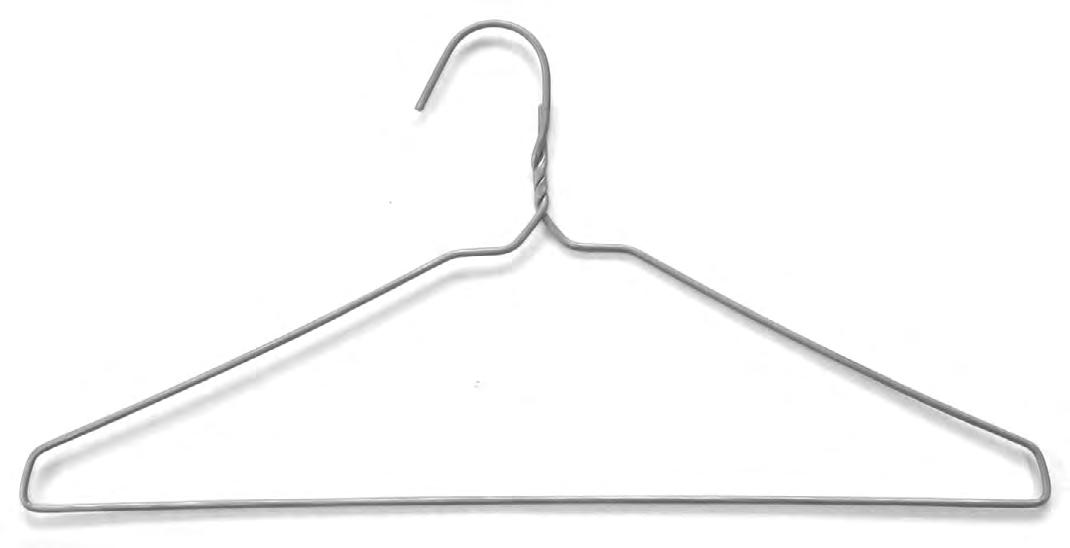
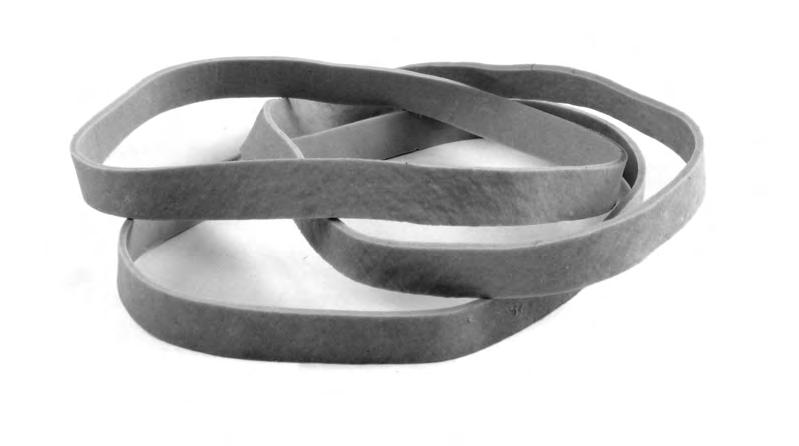
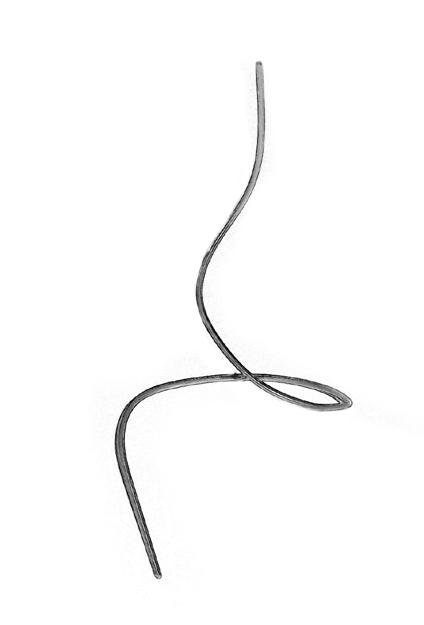
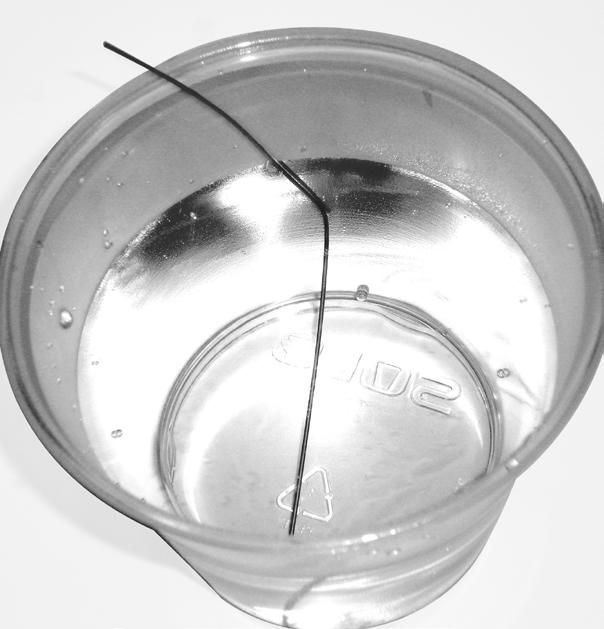
Thermal energy is transformed into motion as the nitinol wire is placed in hot water, causing it to return to its original shape.
The Bi-Metal Bar
When substances and objects are heated, they expand. You may have noticed the spaces between sections of sidewalk. They are designed that way so that the concrete can expand on hot, sunny days without cracking.
Bridges are built with expansion joints that allow the metal and the concrete in the bridge to expand and contract according to temperature, without breaking.
All objects expand when they are heated, but they do not expand at the same rate. Gases and liquids expand very quickly when they are heated. Their molecules can move about freely. A thermometer works because the liquid inside expands and contracts according to temperature.
Solids do not expand as much as gases and liquids because their molecules cannot move freely. It is sometimes hard to see them expand. The bi-metal bar is a good example of how metals expand when heated. This bar is made of two metals – one side is nickel, the other side is stainless steel. These metals expand at different rates. When you placed the bar in the flame, it bent. The stainless steel in the bar expands more quickly than the nickel, so when it is heated, the bar bends. The stainless steel side is the outside of the curve.
When placed in the cup of ice water, the bar bent back the other way to its original shape. If you left the bar in the ice water long enough the bar would bend in the other direction. The stainless steel side also contracts faster when energy is taken away, so it is now on the inside of the curve.
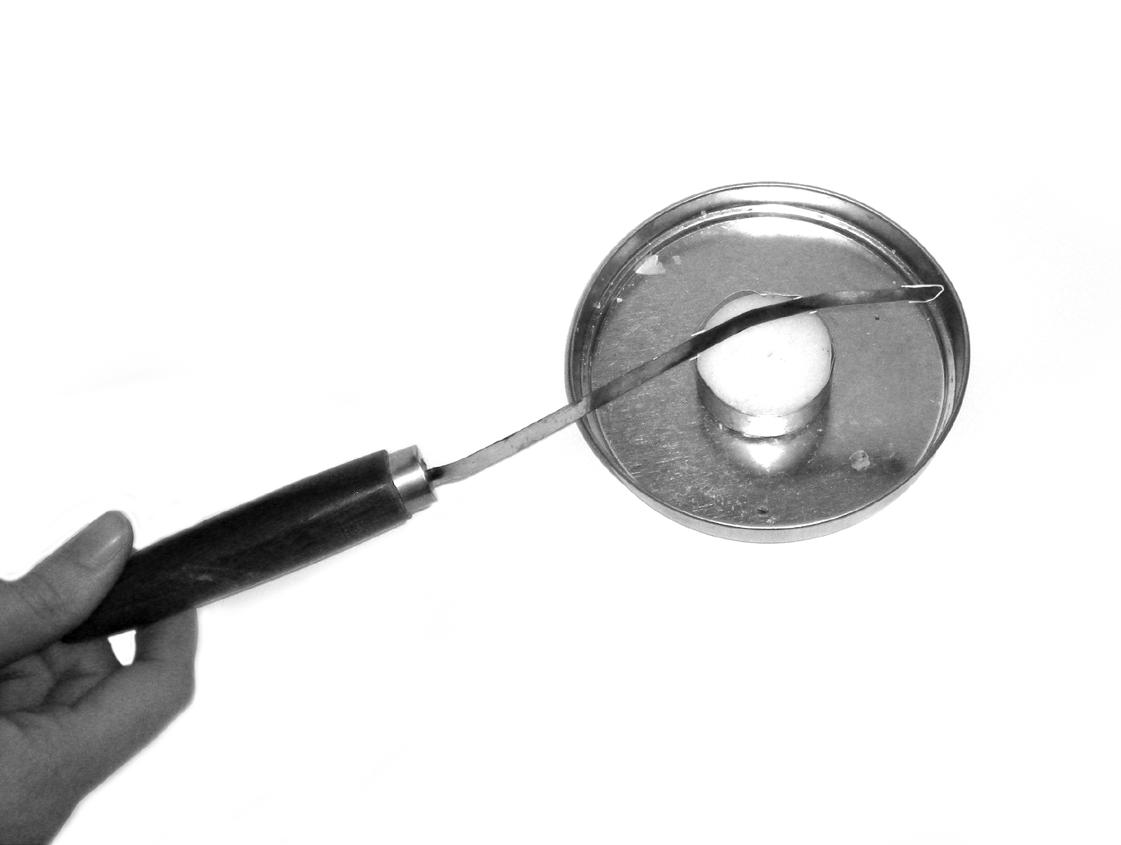
Bi-metal strips like this are very useful. They are used in thermostats on furnaces and air conditioners to control the temperature. When the temperature in a room reaches a certain temperature, the bi-metal strip will bend enough to close a circuit and turn on the furnace or air conditioner. Bi-metal strips are also used in holiday lights that twinkle. When the metal gets hot it causes the strip to bend and stops the flow of electricity (breaks the circuit), which turns the light off. As the strip cools it bends back allowing electricity to flow again, completing the circuit and turning the light on.
Why the Bi-Metal Bar Bends
Bimetal Bar
Metals expand at different rates when heated, causing the bi-metal bar to bend when placed over the flame.





Station Five Guide
CHEMICAL ENERGY
Part One: Glow Sticks
! Caution
Hot water for this station should be less than 85 degrees Celcius to prevent the glow sticks from leaking.
? Questions
How does the temperature affect the rate of the chemical reaction in a glow stick?
What energy transformation(s) occur?
Hypothesis
Read the questions above and the procedure below. Write a hypothesis to address the questions. Identify the variables to help you write the hypothesis.
Independent Variable(s)______________________________________________________________________
Dependent Variable(s)_______________________________________________________________________
Constants________________________________________________________________________________
Materials
3 Glow sticks of the same color
1 Cup of hot water
1 Cup of ice water
Safety glasses
Procedure
A Vocabulary
chemical reaction
molecules
radiant energy
thermal energy
1. Look at an unbroken glow stick. Notice the container inside the glow stick. Draw a diagram of a glow stick, label the parts, and describe how the glow stick works.
2. Put hot water and ice water in two separate cups.
3. Bend the three glow sticks until the containers inside break.
4. Starting at the same time, place one glow stick in the ice water, one in the hot water, and leave one out of the water at room temperature for 2-3 minutes.
5. Take the glow sticks out of the water and compare their brightness to the glow stick that has not been in the water. Record your observations.
Data
Part One Conclusion
Explain how temperature affected the rate of the chemical reaction in the glow stick. Describe the energy transformation(s) that occurred.

Station Five Guide | CHEMICAL ENERGY
Part Two: The Apple Battery
? Questions
How do the diameter of the metal pieces, depth of the metal pieces, and metal combination affect the electric current produced by an apple battery?
What energy transformation(s) occur?
Hypothesis
Read the questions above and the procedure below. Write a hypothesis to address the questions. Identify the variables to help you write the hypothesis.
Independent Variables______________________________________________________________________
Dependent Variables_______________________________________________________________________
Constants________________________________________________________________________________
Materials
Small nail
Large nail
Tin wire
Thick copper wire
Thin copper wire
DC microammeter
Ruler
Apple
2 Alligator clips
Permanent marker
Safety glasses
Procedure
A Vocabulary
chemical energy
conduct
direct current
electricity
electrode
1. Use the ruler and permanent marker to make marks at 1 cm, 2 cm, 3 cm, and 4 cm on each nail and wire.
2. Insert the large nail and thick copper wire into the apple 1 cm. Make sure the ends do not touch each other.
3. Attach the end of one alligator clip to the positive (red) terminal of the microammeter, and the other end of the clip to the thick copper wire.
4. Attach one end of the second alligator clip to the negative (black) terminal of the microammeter, and the other end of the clip to the nail.
5. Reverse the arrangement of the alligator clips, observe what happens on the microammeter.
6. Draw a diagram of the apple battery and record your observations.
7. Push the nail and wire into the apple in one-centimeter increments, up to four centimeters. Record the microammeter readings in Data Table 1.
8. Push the nail and wire into the apple so that the ends are touching. Record the microammeter reading in Data Table 1.
9. Remove the thick copper wire and replace it with the thin copper wire, inserting it into the apple. Reattach the alligator clips and repeat steps 7 and 8.
10. Remove the large nail and replace it with the small nail, inserting it into the apple. Reattach the alligator clips and repeat steps 7 and 8.
11. Push the two copper wires into the apple and attach the wires to the microammeter. Record the microammeter reading in Data Table 2.
12. Experiment with other combinations of metals and record your readings in Data Table 2.

Station Five Guide | CHEMICAL ENERGY
Data
DATA TABLE 1
DATA TABLE 2
Part Two Conclusion
Explain how the depth, diameter, and combinations of wires affected the electrical output of the apple battery. Use data to support your answer. Describe the energy transformation(s) that occurred.
Station Five Conclusions
Read the Station Five: What Was Happening? article. Using your conclusions from each part of the station, summarize the energy transformations you observed. How do your findings compare to the explanations in Station Five: What Was Happening? article? Cite specific textual evidence in your summary.
? Questions for Further Investigation
When might you use the information you learned from this station? What new questions do you have? Brainstorm new investigation questions for this station.





Station Five: What Was Happening?
CHEMICAL
Glow Sticks
At this station, chemical energy was transformed into radiant energy. The glow sticks are filled with an ester, a chemical compound, and a fluorescent dye. Inside the glow stick you can see a little glass container, called an ampule. The ampule holds hydrogen peroxide, a liquid often used to clean cuts. Before you break the ampule the two chemicals cannot touch each other.
When you broke the ampule, the chemicals mixed together and formed new chemicals. These chemicals do not need as much energy to hold their molecules together, so they release that extra energy as light.
When you put the glow stick in cold water, the glow stick wasn’t as bright. The cold water absorbed some of the thermal energy from the glow stick, so the reaction slowed down.
When placed in hot water, the chemicals in the glow stick absorbed the thermal energy from the hot water. The added energy made the chemicals react faster and produce more light. At room temperature, the glow stick will glow for about two hours, in hot water about 30 minutes, and in ice water it might glow for six hours.
If we add thermal energy, the glow stick will glow brighter, but for a shorter time. If we take away thermal energy, it will glow for a long time, but not as brightly. Either way, the same total amount of light will be produced. The glow stick is a good example of changing chemical energy into radiant energy. The temperature of the glow sticks will affect the rate of the chemical reaction and the intensity of the light.
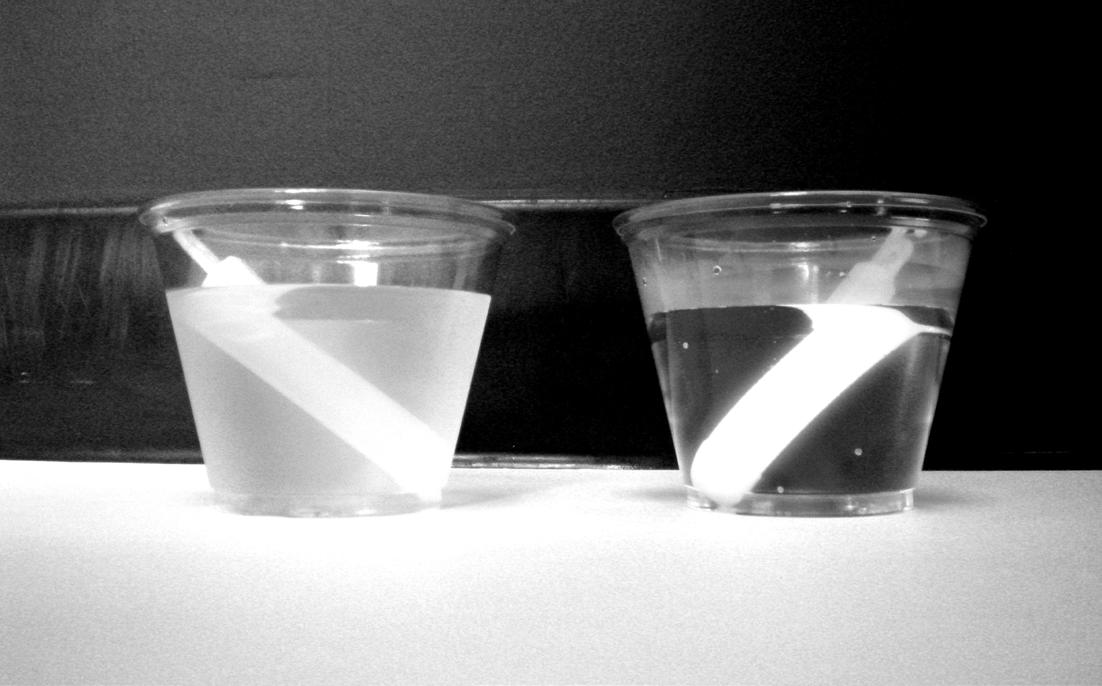
How a Glow Stick Works
Ester and Dye Glass Container Plastic Casing


1. The glow stick is lled with a chemical compound called an ester and dye. Inside, a small glass container is lled with hydrogen peroxide.
2. When the glow stick is bent and the container is broken, the chemicals from the ampule and the glow stick mix, causing a chemical reaction.
3. During the chemical reaction, energy is released as light.
The Apple Battery
In the apple battery investigation you used the chemical energy in the apple to make electricity. You used the malic acid in the apple to make a battery. Nails are often made of steel and coated in zinc and other metals to keep them from rusting and corroding. When you pushed the nail and a piece of copper wire into the apple and attached them to the microammeter you saw the needle move. This shows that there is an electric current moving through the circuit.
As you observed the microammeter, you saw that the needle moved to the right to indicate an electric current. When you put the nail (zinc) and copper into the apple, they both reacted with the acid, but they did not react the same way. The different reactions created an imbalance in electrical charge. The electrons flowed from the nail through the meter to the copper wire and then back through the apple to the nail. This flow of electrons registered on the microammeter. Chemical energy was converted to electrical energy. Because the microammeter moved to the right it showed that the charge was flowing. This is the way all batteries work. There are two metals and an electrolyte (a non-metal conductor) in batteries, and the electric charge flows from one metal to the other, converting chemical energy into electrical energy.
The further you pushed the metals into the apple, the greater the flow of electrons. There was more electric current because there was more metal to react with the acid, and more electrons were free to move. Direct current (DC) electricity is movement of electrons in one direction only.
When you reversed the arrangement of the clips, the electrons then flowed in the opposite direction. This was seen on the microammeter. The needle should have moved to the left when reversed, below zero. If the meter had more space to the left of zero, it would have read a negative measurement that was similar to the value prior to switching the arrangement of the clips.
The next step was to push both metals into the apple so they were touching each other. No current was flowing through the meter. This does not mean there was not any electric current. It just means the electrons were flowing straight from one metal to the other. Electrons always take the easiest path. This is called a short circuit because the electrons are taking the shortest path.
Next, you added a thin copper wire into the apple, so we could compare the current. The thick wire produced more current because it has more surface area to come in contact with the acid and react to transfer electrons.
When you attached the two copper wires to the microammeter, there should not have been any current. Both copper wires are electron accepters. There is no electron donor. If you attached both zinc nails to the microammeter, there was no current produced in this case either. Both nails are electron donors. There is no electron acceptor. The combination of metals determines which metal will be the electron donor and which will be the electron acceptor.
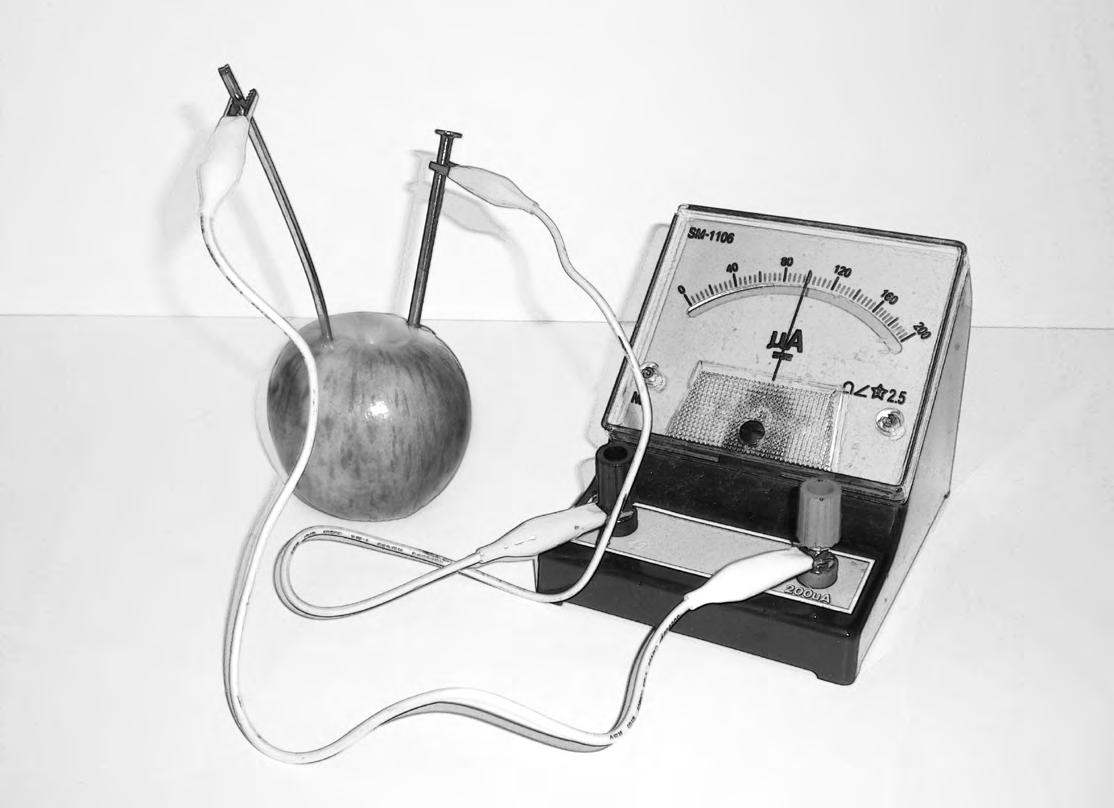
Two metals react with the acid in the apple to produce an electric current. Many fruits and vegetables can be used to make a battery.
Station Six Guide
Part One: Battery and Compass
! Caution
Use only recommended types of batteries for each part. The battery, when attached in the holder, can become hot over time. Remove the battery from the holder when finished.
? Questions
How does an electric current affect the needle of a compass?
What energy transformation(s) occur?
Materials
Heavy-gauge coated wire (thick wire with no clips)
D Battery
D Battery holder
Compass
Safety glasses
Procedure
A Vocabulary
attract
conduct
direct current
electricity
electromagnet
magnetic field
repel
1. Place the compass on the table and wait for the needle to stop moving.
2. Hold the heavy-gauge wire over the compass needle parallel to the compass needle. Observe how the needle moves and record your observation.
3. Rotate the wire perpendicular to the compass needle. Observe how the needle moves and record your observation.
4. Put the battery in the battery holder. Clip one end of the wire into each end of the battery holder. See Diagram 1.
5. Move the wire over the compass repeating steps 2 and 3. Be sure to use caution as the battery and any metal attached to it will become hot.
6. Move the compass over the top of the wire. Do you notice anything different? Remove the battery from the clip immediately after finishing.
Part One Conclusion
parallel
perpendicular
Explain how an electric current affects the needle of a compass. Describe the energy transformation(s) that occured.
Station Six Guide | ELECTRICAL ENERGY
Part Two: Hand Generated Flashlight and Motors
? Questions
How does a motor compare to a hand generated flashlight?
What energy transformation(s) occur?
Materials
Hand generated flashlight
2 Motors (1 disassembled)
1 9-volt Battery
D Battery
Alligator clips
Masking tape
Safety glasses
Procedure
A Vocabulary
chemical energy
conduct
direct current
electricity
electromagnet
motion energy
1. Observe the hand generated flashlight. Notice the magnets and coils of copper wire.
2. Draw the hand generated flashlight. Label the magnets, copper wire, and light bulb.
3. Shake the flashlight several times. Observe and record how the flashlight works and what happens.
4. Look at the disassembled motor. Draw and label the parts of the disassembled motor. Label the magnets and wire.
5. Pull the center section out. Draw and label the center of the motor. Record your observations.
6. Fold a piece of tape like a flag onto the shaft of the assembled motor and put an X on one side.
7. Connect the assembled motor to the 9-volt battery with the alligator clips. Record your observations.
8. Connect the alligator clips to the opposite terminals of the battery. Observe and illustrate your observations. (Hint: Notice the direction of the spinning motor shaft by watching the X on the flag.)
9. Connect the assembled motor to the D battery with the alligator clips. Record your observations.
Part Two Conclusion
Compare a hand generated flashlight and motor. Describe their similarities and differences. Describe the energy transformation(s) that occured.
Station Six Conclusions
Read the Station Six: What Was Happening? article. Using your conclusions from each part of this station, summarize the energy transformations you observed. How do your findings compare to the explanations in the Station Six: What Was Happening? article? Cite specific textual evidence in your summary.
? Questions for Further Investigation
How do a hand generated flashlight and power plant compare?
When might you use the information you learned from this station?
What new questions do you have? Brainstorm new investigation questions for this station.
Station Six: What Was Happening?
ELECTRICAL ENERGY
Battery and Compass
Using a battery, a piece of copper wire, and a compass, you were able to convert electrical energy into motion. When you clipped the ends of the wire to the ends of the battery holder there was an electric current produced, creating a magnetic field. When you placed the wire and battery over the compass, the magnetic field caused the needle to move.
You should have seen the needle of the compass start moving. What do you think caused this to happen? The electric current flowed through the wire and turned the wire into an electromagnet. The needle in the compass is also a magnet, pointing to north. What happens when two magnets are placed together? Either they attract or repel each other, right? That is what was happening here. When you picked up the compass and moved it over the wire, what was the result? The needle moved in the opposite direction. This is because the magnetic field around the wire is like a circle magnet— one side is the north pole of the magnet and the other side is the south pole.
In this investigation we used electrical energy from a battery to move the needle of a compass. We changed chemical energy to electrical energy to motion energy. The chemical energy in the battery is converted to electric current that flows in one direction through the wire forming an electromagnet with a north and south pole. This type of current is called “direct current” or DC because it flows in one direction.
Motors and Batteries
In this station we had two tiny electric motors. Lots of little toys have motors like these. They make the toys move. They convert electrical energy into motion energy. Inside the disassembled motor, you can see a coil of wire on the shaft with small magnets around the coil. Remember that in the compass demonstration we learned that when electricity flows through a coil of wire, it produces a magnetic field around the wire. The wire will act like a magnet. When you bring the same ends of two magnets together—north and north or south and south—they repel each other— they push each other away. Inside the motor, the magnets push away from the magnetic field in the coil of wire. This turns the shaft of the motor, converting electrical energy into motion. Toy motors get their electrical energy from batteries that make electrical energy from the chemical energy stored in them.
What happened when you connected the wires from the motor to the 9-volt battery? Electrical energy from the battery flowed through the coil of wire in the motor. The coil of wire became a magnet—an electromagnet. As you saw, the shaft began to spin. The tape was attached so you could see the shaft turning. Did you notice the direction in which the shaft was turning?
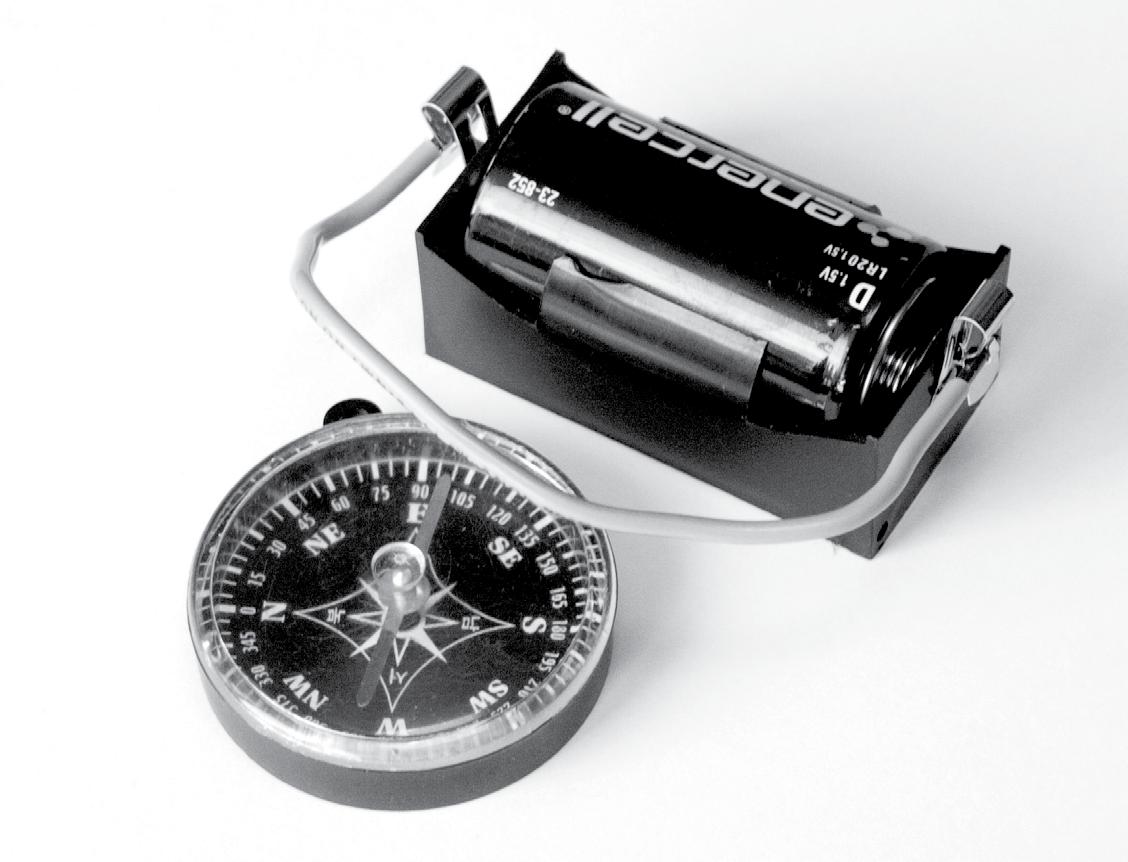
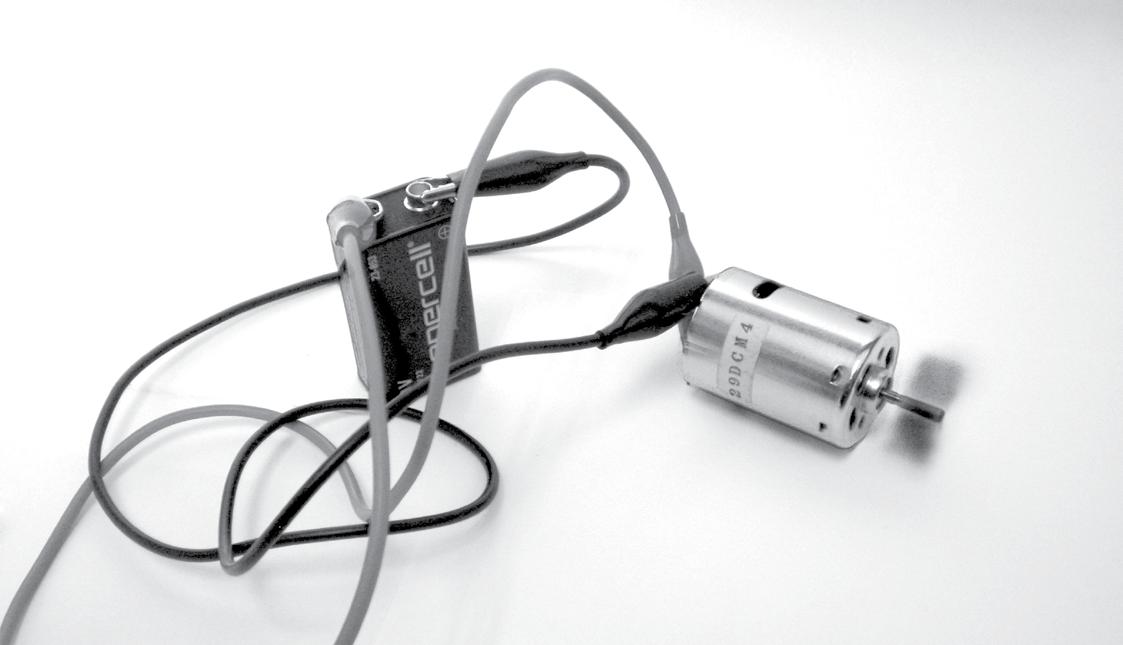
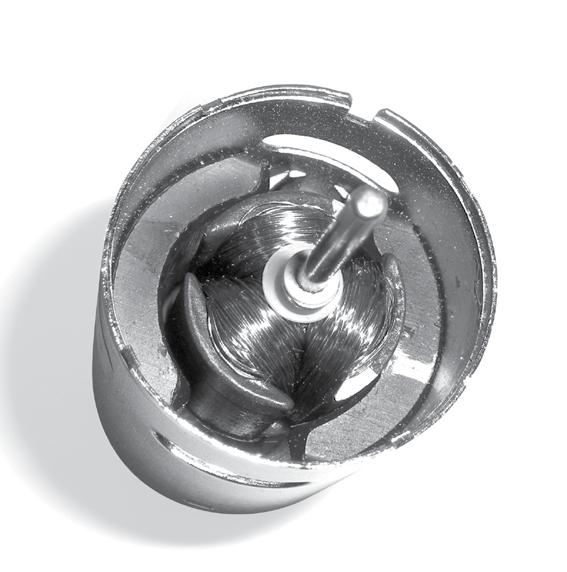
Motors and Generators
You started part two of this station by looking at a hand generated flashlight. It uses a person’s kinetic energy to produce electricity to light the bulb. Inside there is a coil of wire and magnets. When you used your energy to shake the flashlight the magnet passed through the coil of wire. Moving the magnet through the coil of wire produced electricity, which was stored in the capacitor or battery. When you turned the flashlight on, electricity flowed from the capacitor or battery to the bulb.
Power plants use the same concept to produce electricity. Many energy sources are used to spin turbines that rotate coils of copper wire inside magnets to generate electricity. The picture below shows a diagram of a coal power plant. Coal is burned to superheat water into very high temperature, and high pressure steam spins the turbine. Wind turbines use the force of the wind, and hydropower plants use the force of falling water to turn turbine blades.
The turbine in a power plant turns the shaft with the copper wire coil inside the magnets. Electric current is induced as electrons move through the wires. The type of current produced by a power plant generator is alternating current, or AC, which moves in alternating directions. Because the generator has a rotating coil, the electrons flow in one direction and then alternate directions as the coil turns. AC power is more desirable in a power plant because it can provide more power and can be transported a long distance without losing strength. Also, the strength, or voltage, of AC current can be made stronger or weaker using transformers. Transformers reduce the voltage along a power line before it comes into a home. When we charge our laptops or other electronic devices that require DC power, we use an adaptor that converts the AC power from the electrical outlet to DC power going into the device.
Electricity is a secondary source of energy; it does not exist by itself. Electricity generation begins with chemical energy, motion energy, nuclear energy, or radiant energy.
Energy Transformations in a Wind Turbine: Motion to Electrical Energy
Turbine Diagram












1. Coal is fed into a boiler, where it is burned to release thermal energy.
2. Water is piped into the boiler and heated, turning it into steam.
3. The steam travels at high pressure through a steam line.
4. The high pressure steam turns a turbine, which spins a shaft.
5. Inside the generator, the shaft spins coils of copper wire inside a ring of magnets. This creates an electric eld, producing electricity.




Energy Transformations Inside a Coal Power Plant: Chemical to Thermal to Motion to Electrical Energy
6. Electricity is sent to a switchyard, where a transformer increases the voltage, allowing it to travel through the electric grid.
Energy Flow Cards
Through the process of fusion, I convert nuclear energy into radiant energy.
I store chemical energy from food in my cells and turn some of it into other energy. forms of
Through the process of photosynthesis, I convert radiant energy into chemical energy and store it in my cells.
I have chemical energy stored in my cells.
Through the process of fusion, I convert nuclear energy into radiant energy. Green Plant
Through the process of photosynthesis, I convert radiant energy into chemical energy and store it in my cells.
I store chemical energy from food in my cells and turn some of it into other energy. forms of
I store chemical energy from food in my cells and turn some of it into other energy. forms of
I store energy from food in my cells and turn some of it into other forms of energy.
Human Being
I am a fossil fuel. The chemical energy stored in me came from the remains of ancient ferns.
I store chemical energy from food in my cells and turn some of it into other forms of energy.
I am a fossil fuel. The chemical energy stored in me came from the remains of ancient sea plants and animals.
I convert motion energy into electrical energy and electrical energy into light when I’m shaken.
Radiant Energy
I store chemical energy from food in my cells and turn some of it into other energy. forms of 1 Sun
Through the process of fusion, I convert nuclear energy into radiant energy.
GREEN PLANT
Green Plant
I store chemical energy from food in my cells and turn some of it into other energy. forms of 1 1 HUMAN BEING
COW
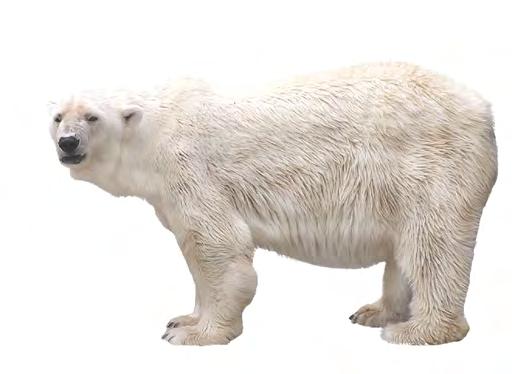
Through the process of photosynthesis, I convert radiant energy into chemical energy and store it in my cells.
Through the process of photosynthesis, I convert radiant energy into chemical energy and store it in my cells.
I store chemical energy from food in my cells and turn some of it into other forms of energy.
I store chemical energy from food in my cells and turn some of it into other forms of energy.
Green Plant
I convert nuclear energy into radiant energy.
I store chemical energy from food in my cells and turn some of it into other energy. forms of
Through the process of fusion, I convert nuclear energy into radiant energy.
Through the process of photosynthesis, I convert radiant energy into chemical energy and store it in my cells.
Through the process of photosynthesis, I convert radiant energy into chemical energy and store it in my cells.
I have chemical energy stored in my cells.
I store chemical energy from food in my cells and turn some of it into other energy. forms of
I have chemical energy stored in my cells.
I store chemical energy from food in my cells and turn some of it into other forms of energy.
I have chemical energy stored in my cells. Human Being
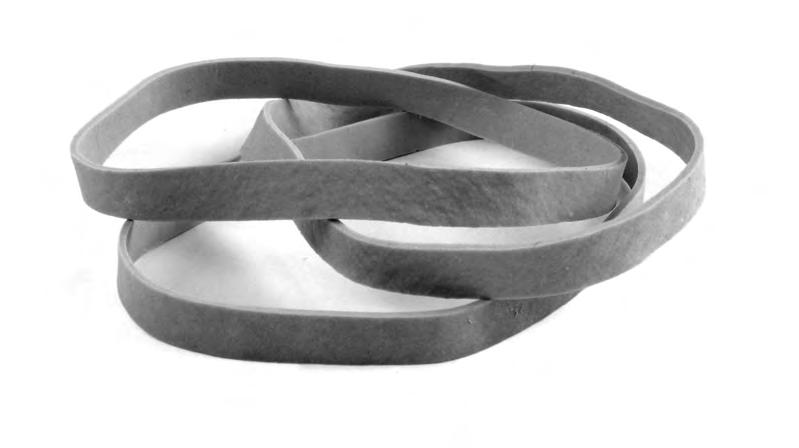
I have chemical energy stored in my cells.
I store elastic energy when I am stretched and when I’m let go, I release thermal and motion energy.
I have chemical energy stored in my cells.
Intermediate Science of Energy Brochure
New students have moved to your school. They have not learned about energy transformations. Your assignment is to help them by developing an energy transformation brochure. At least five energy transformations must be addressed. Three of these may be examples from the Intermediate Science of Energy unit. At least two must be transformations not experimented with in class.
The majority of the grade will be on content; however, it is expected that you will use correct grammar, spelling, and punctuation. Graphics (i.e., pictures, drawings, diagrams, etc.) are to be incorporated. All aspects of the brochure must follow copyright guidelines.
Content At least five energy transformations are correctly identified and explained. At least two are examples that are not included in the Intermediate Science of Energy unit.
Graphics
Mechanics
Three to four energy transformations are correctly identified and explained.
One or two transformations are correctly identified and explained.
No energy transformations are correctly described.
Graphics are incorporated that enhance understanding of transformations.
There are no errors in grammar, spelling, or punctuation.
Copyright No copyright violations are present. Sources are cited properly.
Total /9 Points
Graphics are incorporated, but do not help with the understanding of energy transformations.
There are fewer than five errors in grammar, spelling, or punctuation.
No copyright violations are present; however, not all sources are cited properly.
No graphics are incorporated.
There are five or more errors in grammar, spelling, or punctuation.
Copyright violations are present.
Intermediate Science of Energy Assessment
1. When you drop a basketball from eye level, the ball will not return to its original height. Explain the energy transformations that cause this to happen.
2. Give an example of potential energy transforming into kinetic energy.
3. When iron rusts, is an endothermic or an exothermic process taking place? What energy transformation causes this process?
4. Describe the energy transformations that are taking place in a radiometer.
5. Describe the energy transformations that occur with a PV cell?
6. Compare and/or contrast the energy transformation in a bi-metal bar and a nitinol wire.
7. How does temperature affect the rate at which the chemical reaction occurs in a glow stick? What energy transformations occur during this reaction?
8. What energy transformation(s) occur in an apple battery? What variables affect the transformation(s).
9. How does a hand generated flashlight transform motion into light?
10. Starting with the sun, trace the energy flow needed to ride a bike.
Forms of Energy Fun
Energy Scramble
What Does Energy Do?
Unscramble the five words that describe what energy does, then use the letters with the dots underneath to figure out the mystery word.
Unscramble the ve words that describe what energy does, then use the letters with the dots underneath to gure out the mystery word. (Two points each - 12 points total.)
Mystery Word
Energy Transformations
Fill in the blanks to show the energy transformations made by each object. One point for each blank—38 points total
Energy Flow
Unscramble the energy flow so that the forms of energy are in the proper order. Number the pictures from 1 to 8 on the lines to the right of the pictures, with number one as the beginning of the flow.
SCIENCE OF ENERGY BINGO
A. Knows what type of reaction releases thermal energy
E. Knows the force responsible for the attraction between the Earth and nearby masses
I. Knows where most energy on Earth originates
M. Knows how an electric generator works
B. Knows the form of energy that comes from the sun
F. Knows why rubbing your hands together makes them warm
J. Knows what type of reaction absorbs thermal energy
N. Knows what device turns energy from the sun directly into electricity
C. Knows one way to store energy
G. Can name a form of kinetic energy
K. Has used a radiant clothes dryer
O. Can name a form of potential energy
D. Knows the form in which our bodies store energy
H. Has visited a thermal power plant
L. Knows what form of energy is stored in most energy sources
P. Knows what energy can be transformed into
Forms of Energy in the Round Cards
I have chemical energy.
Who has the process where very small nuclei are combined into large nuclei?
I have nuclear fusion.
Who has stored energy?
I have potential energy.
Who has a material that moves thermal or electrical energy well?
I have conductor.
Who has the form of energy that includes visible light?
I have radiant energy.
Who has the concept that energy is neither created nor destroyed?
I have the Law of Conservation of Energy.
Who has the movement of objects or substances from one place to another?
I have motion.
Who has the process by which plants convert radiant energy into chemical energy?
I have photosynthesis.
Who has a chemical process that releases thermal (heat) energy?
I have exothermic process.
Who has the form of energy that is the movement of electrons?
I have electrical energy.
Who has the change where one or more substances become one or more new substances?
I have chemical change.
Who has the form of energy commonly referred to as heat?
I have thermal energy.
Who has the ability to cause change or do work?
I have energy.
Who has a device that converts radiant energy into electrical energy?
I have photovoltaic cell.
Who has the energy of moving things?
I have inertia.
Who has energy that is stored in objects when stretched or compressed?
I have elastic energy.
Who has the force of attraction between any two objects?
I have gravity.
Who has the process of splitting large nuclei to release energy?
I have nuclear fission.
Who has the form of energy that is stored in the nucleus of an atom?
I have kinetic energy.
Who has what must be overcome to change the speed or direction of an object?
I have nuclear energy.
Who has a material that does not transfer thermal or electrical energy well?
I have insulator.
Who has the process by which thermal energy is transferred by moving through a gas or liquid?
I have convection.
Who has a device that converts motion into electrical energy?
I have generator.
Who has the movement of energy through substances in longitudinal waves?
I have sound.
Who has radiant energy bouncing off an object?
I have reflection.
Who has a force that opposes motion?
I have friction.
Who has a change where no new substance is formed?
I have physical change.
Who has a chemical process that absorbs thermal (heat) energy?
I have endothermic process.
Who has the portion of radiant energy that lets us see?
I have visible light.
Who has the process by which thermal energy is transferred between objects that are touching?
I have conduction.
Who has the form of energy stored in the bonds between atoms and molecules?









Glossary
absorb the ability of a substance or material to take in another substance or energy, like a sponge taking in water
alternating current (AC) electricity in which the electrons change direction at regular intervals; used to move energy from one place to another, usually through a wire; the electricity used in homes to operate lights, televisions, and other household devices
ampule a glass container, usually holding a liquid atom the smallest part of all matter attract to draw in or stick to
Celsius temperature scale in which the freezing point of water is 0° and the boiling point of water is 100° chemical energy the energy stored in substances; the energy held in the atomic bonds that hold atoms to each other chemical reaction a change or process in which new substances are formed collision when two objects hit each other and transfer energy compress to press or squeeze together conduct to transfer energy from one place to another contract to shorten the length of an object conversion to change from one thing to another convert to alter the physical or chemical properties of a substance current the flow of energy from one place to another direct current (DC) the flow of electricity through a conductor, in which electric charges move in only one direction elastic energy energy stored in an object when force is applied, when stretched or compressed electrical energy the energy of moving electrons; a secondary source of energy electricity the energy of moving electrons
electrode the positive or negative terminal of a battery or of another electrical device electrolyte a chemical compound that dissolves to conduct electricity electromagnet a magnet created by the flow of electrons through a conductor or wire endothermic a change where energy is absorbed; this is usually felt as a loss of heat from the surroundings or the feeling of cold energy the ability to do work or make change energy level area where electrons can be found; describes the probable amount of energy in an atom energy transformation the process of energy moving from one place or object to another ester a chemical compound made from an alcohol and an acid exothermic a change where energy is released; this is usually felt as heat expand to increase the size of an object
Fahrenheit temperature scale commonly used in the U.S. in which the freezing point of water is 32° and the boiling point is 212°
fission a nuclear reaction that breaks apart an atom friction a force that opposes motion fusion a nuclear reaction that combines two atoms together to make another larger atom generator a device that changes motion energy into electricity
gravitational potential energy energy of place or position
heat energy that flows from one object to another by virtue of a difference in temperature hypothesis an educated guess that answers a scientific problem or question iron oxide a chemical compound composed of iron and oxygen, commonly called rust kilowatt-hour a unit of measure that is equal to 1,000 watts of power for one hour, commonly used to measure amounts of electrical energy kinetic energy the energy of motion Law of Conservation of Energy states that energy cannot be created or destroyed, it can only change form or be transferred
magnetic field the region of magnetic force around a magnet mass the amount of matter in an object
molecular a description of the smallest parts of matter molecule composed of two or more atoms that are chemically bonded to each other and act as a single particle; the smallest part of a substance that has all of the properties of that substance motion energy the movement of a substance from one place to another nickel a metal that is silver in color and bendable (ductile) nonrenewable resource a natural resource that cannot be replaced or would take millions of years to replace; nonrenewable energy resources are petroleum, natural gas, coal, propane, and uranium nuclear energy the energy contained in the in the nucleus of an atom; used commonly in reactors to produce heat, which can then be used to generate electricity parallel lying or moving in the same direction while always the same distance apart perpendicular a line at the right angles to another line or plane photovoltaic cell a device composed of silicon and other substances used to generate electricity from sunlight potential energy energy that is stored in an object based upon its position prediction a thoughtful guess about the future radiant energy electromagnetic energy that travels in waves such as light, x-rays, and microwaves reaction a response that is produced by the action of another object or force rebound to spring back or the motion of an object after it hits another object release to allow something to move or flow freely renewable resource a natural resource that can be easily replaced over a short period of time; renewable energy resources are wind, geothermal, solar, hydropower, and biomass repel a force that pushes away other objects retention to hold onto something silicon a non-metallic element; number 14 on the periodic table of elements temperature the measure of the average kinetic energy of particles in a substance thermal energy the sum of energy of the molecules making up a substance; for this unit, it is used to mean heat titanium a silvery-gray, metallic element that is lightweight and strong; number 81 on the periodic table of elements
transform to change the structure, shape, or composition of a substance transformation the act of changing the structure, shape, or composition of an object turbine a rotary engine that can be caused to turn by the force of electricity, wind, water, or other forces vacuum the absence of matter in a given area; empty space
Youth AWards Program for Energy Achievement
NEED’s annual Youth Awards Program for Energy Achievement rewards students for their e orts in energy outreach and student leadership.
The Youth Awards Program is great for all schools—new to energy education, or veteran. Projects and outreach completed for the program provide opportunity for enrichment and engagement, as well as an opportunity for your students, classroom, and school to shine. Youth Awards projects can be completed by afterschool/out-of-school time programs, community groups, and even families!
What’s involved?
Students and teachers set goals and objectives and keep a record of their activities. Students create a digital project to submit for judging. In April, digital projects are uploaded to the online submission site.
Check out:
For more information and project submission details, we invite you to visit https://youthawards.need.org. Be sure to explore the site to view past winning projects and garner inspiration!
Youth Energy Conference & Awards
The NEED Youth Energy Conference and Awards gives students more opportunities to learn about energy and to explore energy in STEM (science, technology, engineering, and math).
The annual June conference has students from across the country working in groups on an Energy Challenge designed to stretch their minds and energy knowledge. The conference culminates with the Youth Awards Ceremony recognizing student work throughout the year and during the conference.
For More Info: www.need.org/youthenergyconference
Intermediate Science of Energy Evaluation Form
1. Did you conduct the entire unit?
2. Were the instructions clear and easy to follow?
3. Did the activities meet your academic objectives?
4. Were the activities age appropriate?
5. Were the allotted times sufficient to conduct the activities?
6. Were the activities easy to use?
Yes
Yes
Yes
No
No
No
No
7. Was the preparation required acceptable for the activities? Yes
8. Were the students interested and motivated?
9. Was the energy knowledge content age appropriate?
10. Would you teach this unit again?
Yes
Yes
Yes
No
No
No
No
No Please explain any ‘no’ statement below How would you rate the unit
How would your students rate the unit
What would make the unit more useful to you?
Other Comments:
AES
AES Clean Energy Development
American Electric Power Foundation
Appalachian Voices
Arizona Sustainability Alliance
Atlantic City Electric
Avangrid
Baltimore Gas & Electric
Berkshire Gas - Avangrid
BP America Inc
Bob Moran Charitable Giving Fund
Cape Light Compact–Massachusetts
Celanese Foundation
Central Alabama Electric Cooperative
CITGO
The City of Cuyahoga Falls
Clean Virginia CLEAResult
ComEd
Con uence
ConocoPhillips
Constellation
Delmarva Power
Department of Education and Early Childhood
Development - Government of New Brunswick, Canada
Dominion Energy, Inc.
Dominion Energy Charitable Foundation
DonorsChoose
East Baton Rouge Parish Schools
East Kentucky Power Cooperative
EcoCentricNow
EDP Renewables
EduCon Educational Consulting
Elmo Foundation
Enel Green Power North America
EnergizeCT
ENGIE
Entergy
Equinix
Eversource
Exelon
Exelon Foundation
Foundation for Environmental Education
FPL
Generac
Georgia Power
Gerald Harrington, Geologist
Government of Thailand–Energy Ministry
Greater New Orleans STEM
GREEN Charter Schools
Green Power EMC
Guilford County Schools–North Carolina
Honeywell
National Sponsors and Partners
Illinois Clean Energy Community Foundation
Illinois International Brotherhood of Electrical
Workers Renewable Energy Fund
Independent Petroleum Association of New Mexico
Interstate Natural Gas Association of America Foundation
Intuit
Iowa Governor’s STEM Advisory Council -
Scale Up
Iowa Lakes Community College
Iowa State University
Iron Mountain Data Centers
Kansas Corporation Energy Commission
Kansas Energy Program – K-State Engineering
Extension
Katy Independent School District
Kentucky Environmental Education Council
Kentucky O ce of Energy Policy
Kentucky Power–An AEP Company
Liberty Utilities
Llano Land and Exploration
Louisiana State Energy O ce
Louisiana State University – Agricultural Center
LUMA
Marshall University
Mass Save
Mercedes Benz USA
Minneapolis Public Schools
Mississippi Development Authority–Energy Division
Motus Experiential
National Fuel
National Grid
National Hydropower Association
National Ocean Industries Association
National Renewable Energy Laboratory
NC Green Power
Nebraskans for Solar
NextEra Energy Resources
Nicor Gas
NCi – Northeast Construction
North Shore Gas
O shore Technology Conference
Ohio Energy Project
Oklahoma Gas and Electric Energy Corporation
Omaha Public Power District
Ormat
Paci c Gas and Electric Company
PECO
Peoples Gas
Pepco
Performance Services, Inc.
Permian Basin Petroleum Museum
Phillips 66
PowerSouth Energy Cooperative
PPG
Prince George’s County O ce of Human
Resource Management (MD)
Prince George’s County O ce of Sustainable Energy (MD)
Providence Public Schools
Public Service of Oklahoma - AEP
Quarto Publishing Group
The Rapha Foundation
Renewable Energy Alaska Project
Rhoades Energy
Rhode Island O ce of Energy Resources
Salal Foundation/Salal Credit Union
Salt River Project
Salt River Rural Electric Cooperative
Schneider Electric
C.T. Seaver Trust
Secure Solar Futures, LLC
Shell USA, Inc.
SMUD
Society of Petroleum Engineers
South Carolina Energy O ce
Southern Company Gas
Snohomish County PUD
SunTribe Solar
TXU Energy
United Way of Greater Philadelphia and Southern New Jersey
United Illuminating Unitil
University of Iowa
University of Louisville
University of North Carolina
University of Northern Iowa
University of Rhode Island
U.S. Department of Energy
U.S. Department of Energy–O ce of Energy
E ciency and Renewable Energy
U.S. Department of Energy - Solar Decathlon
U.S. Department of Energy - Water Power
Technologies O ce
U.S. Department of Energy–Wind for Schools
U.S. Energy Information Administration
United States Virgin Islands Energy O ce
Vineyard Wind
Virginia Cooperative Extension
Virginia Natural Gas
Vistra Energy
We Care Solar
West Virginia O ce of Energy
West Warwick Public Schools
Williams
